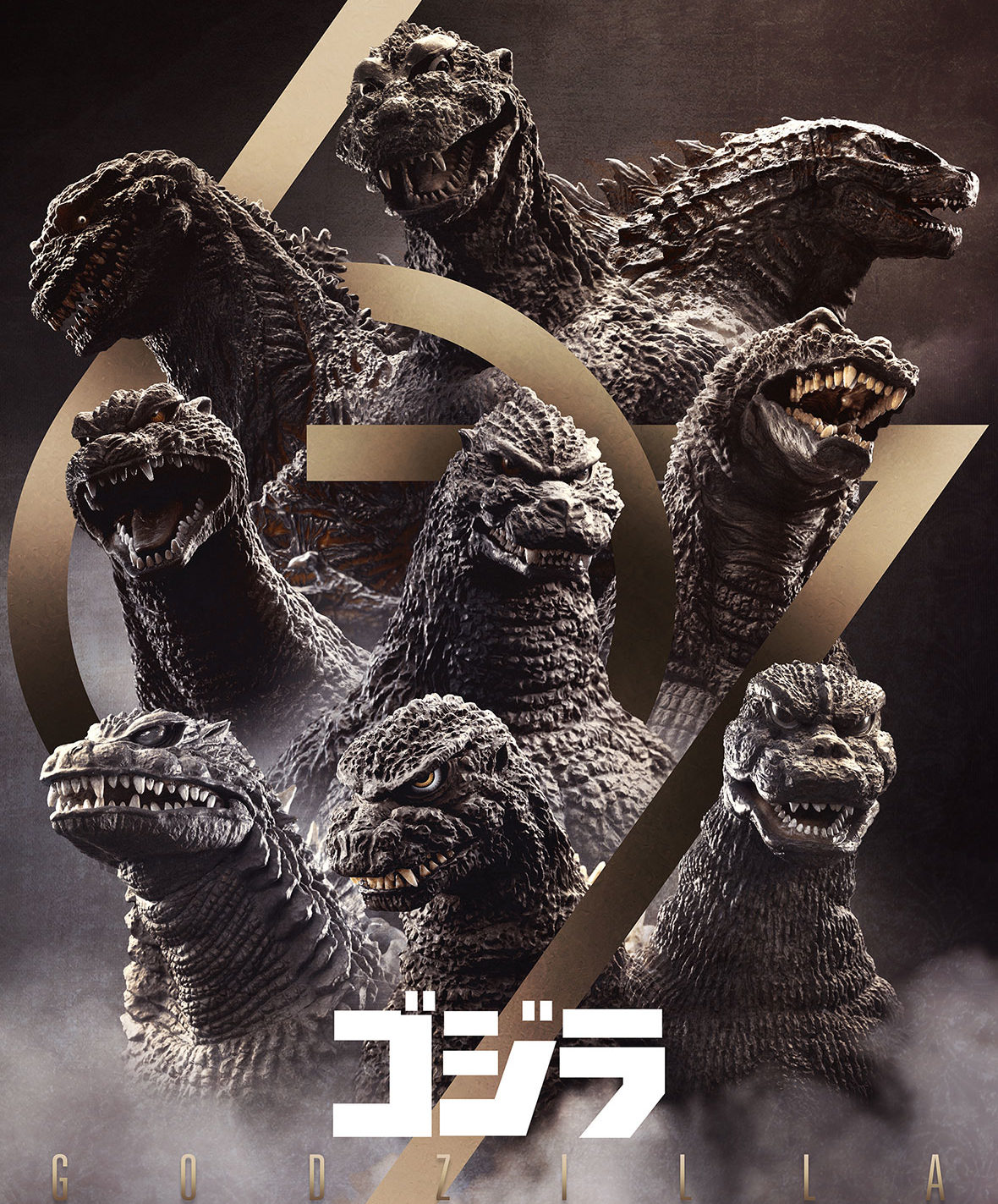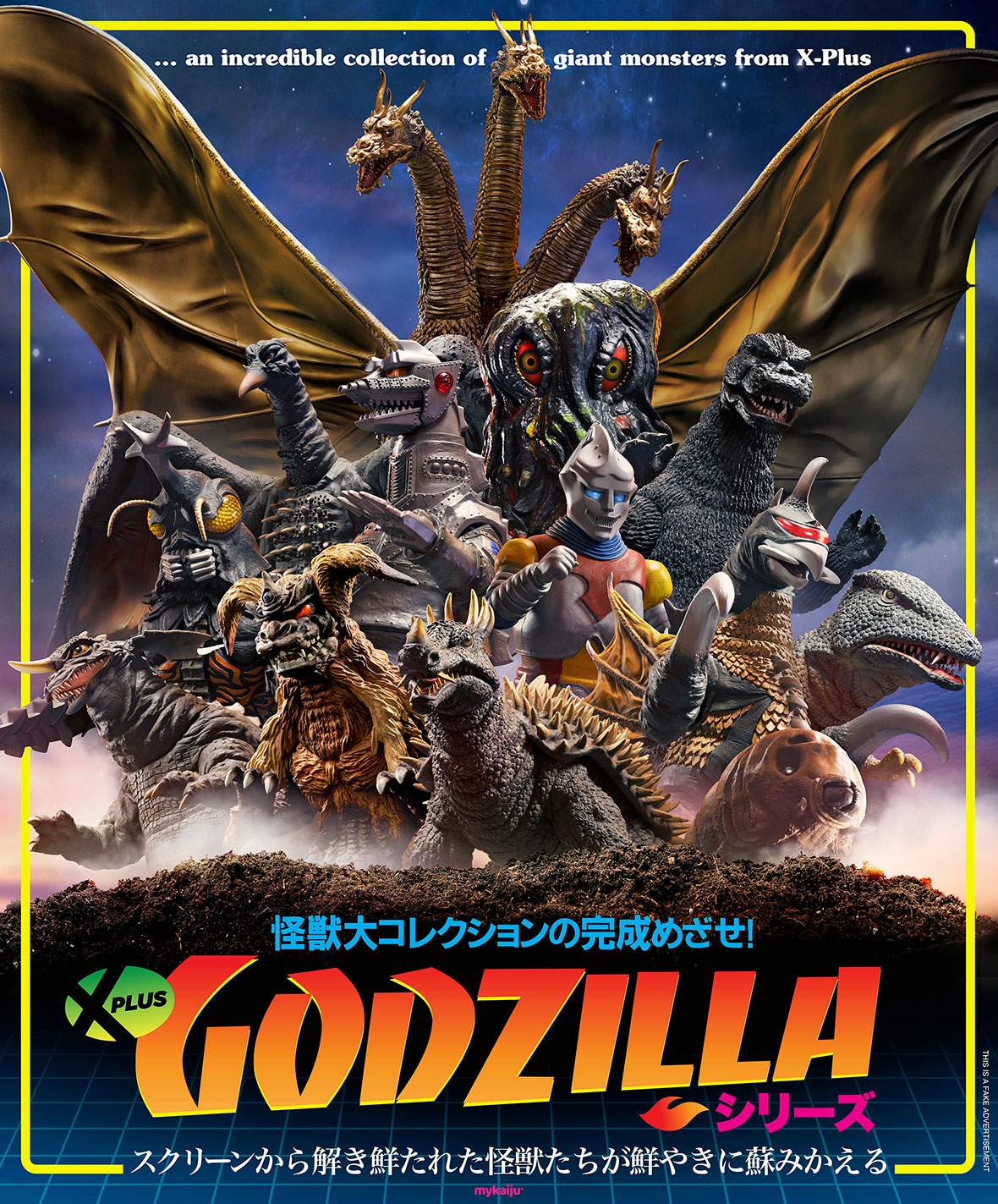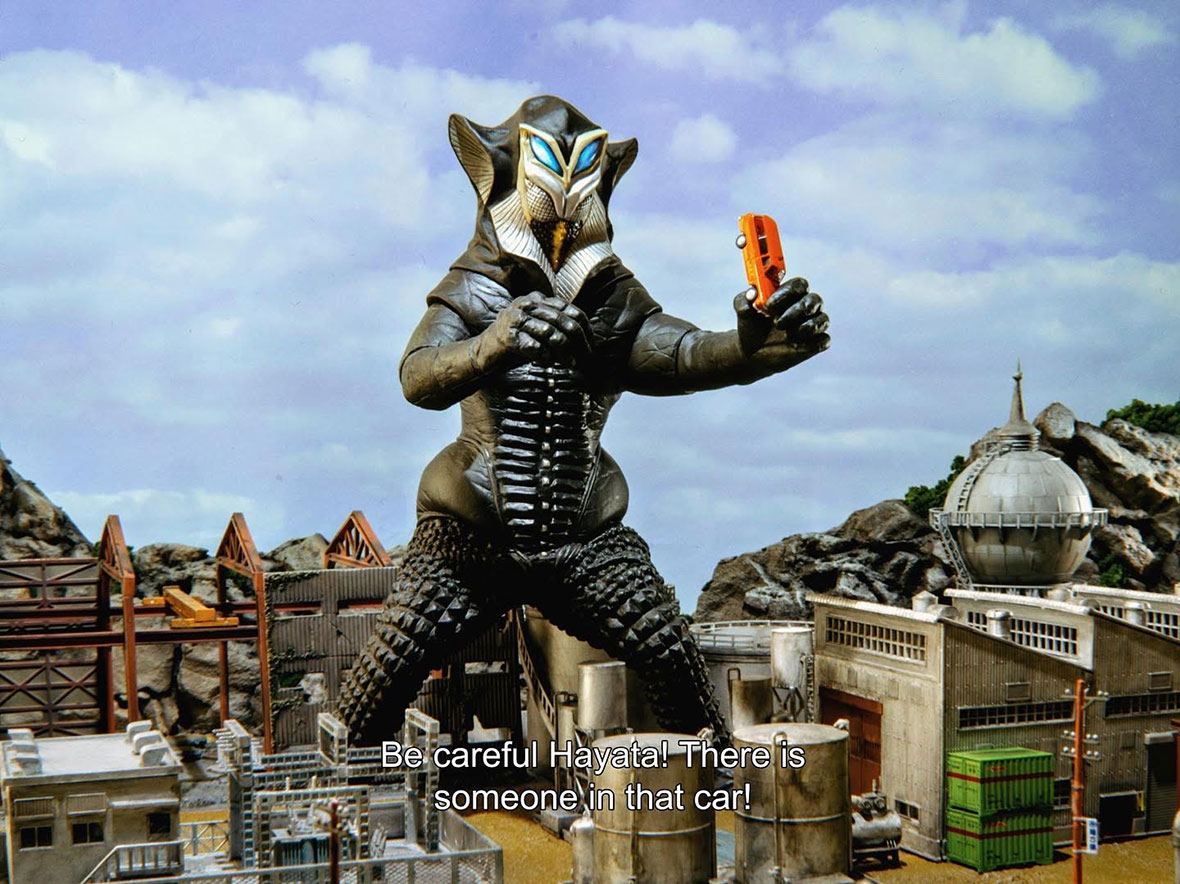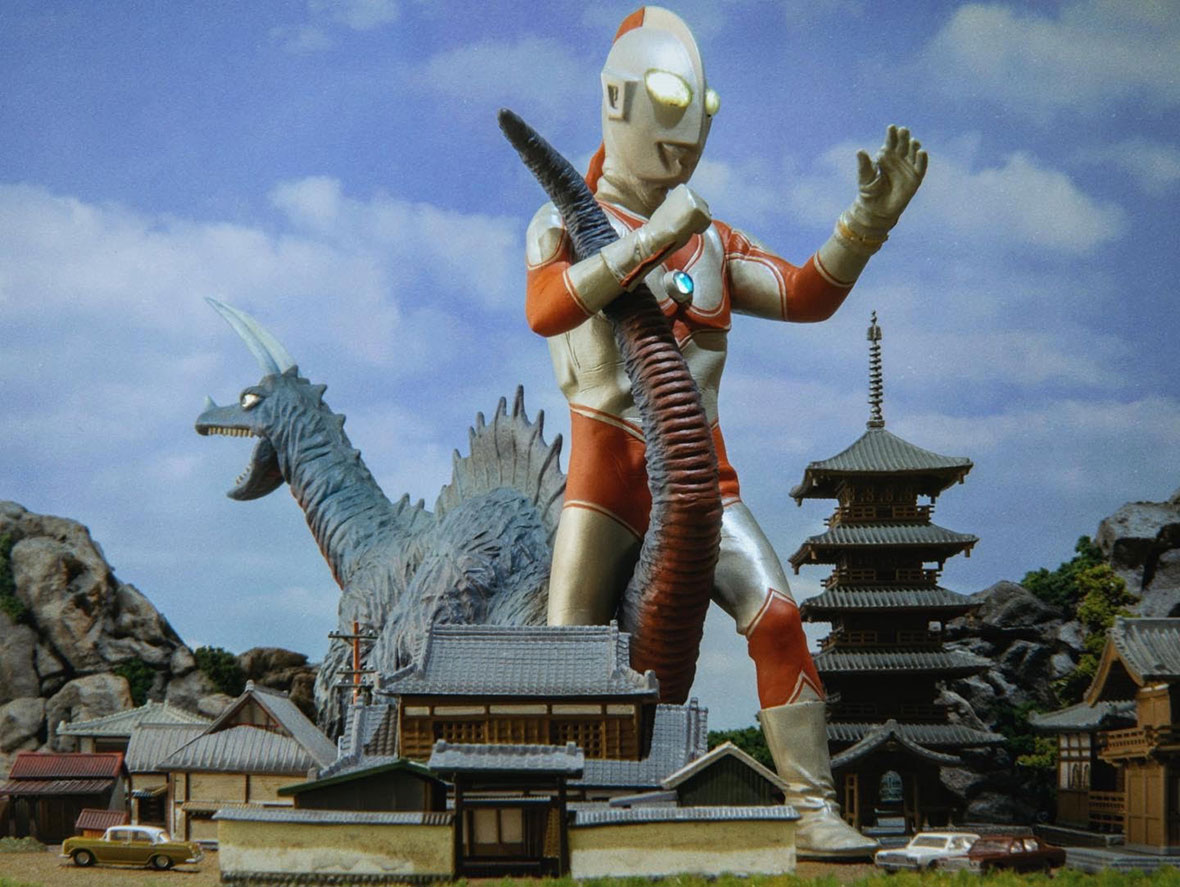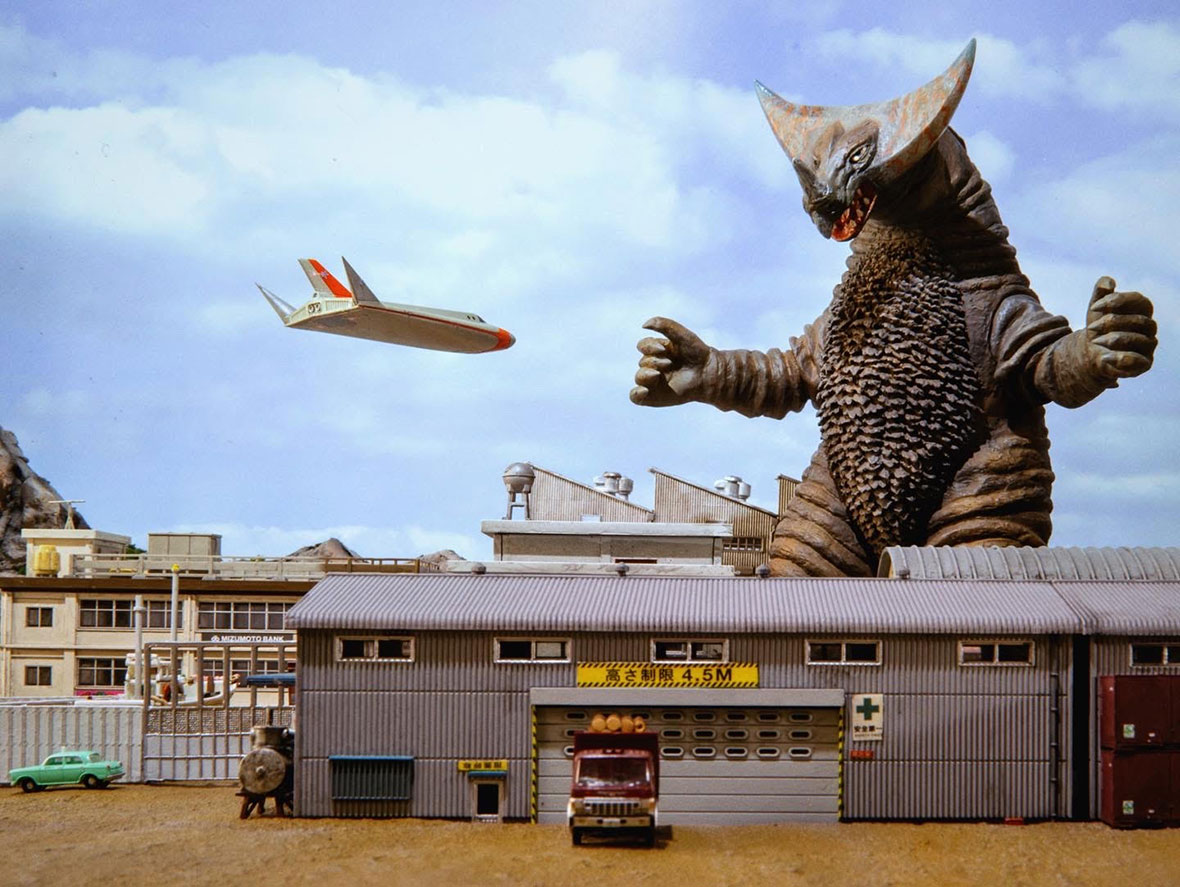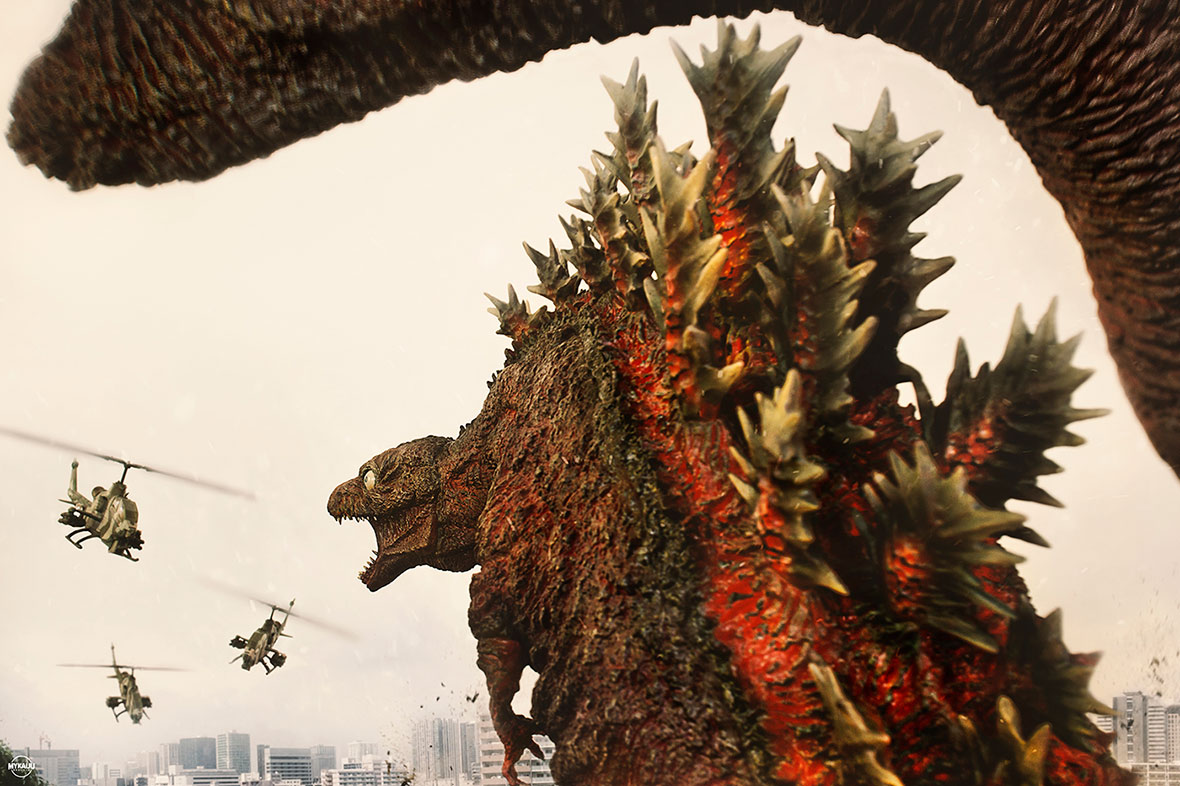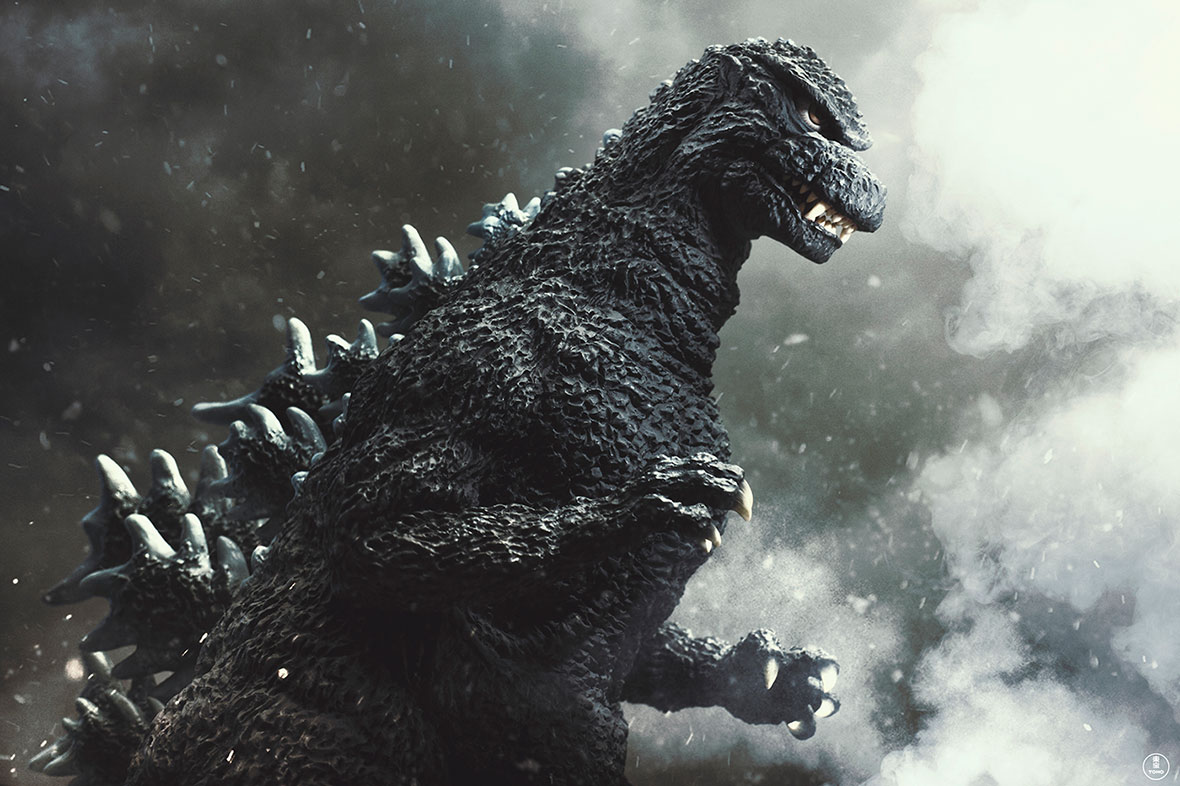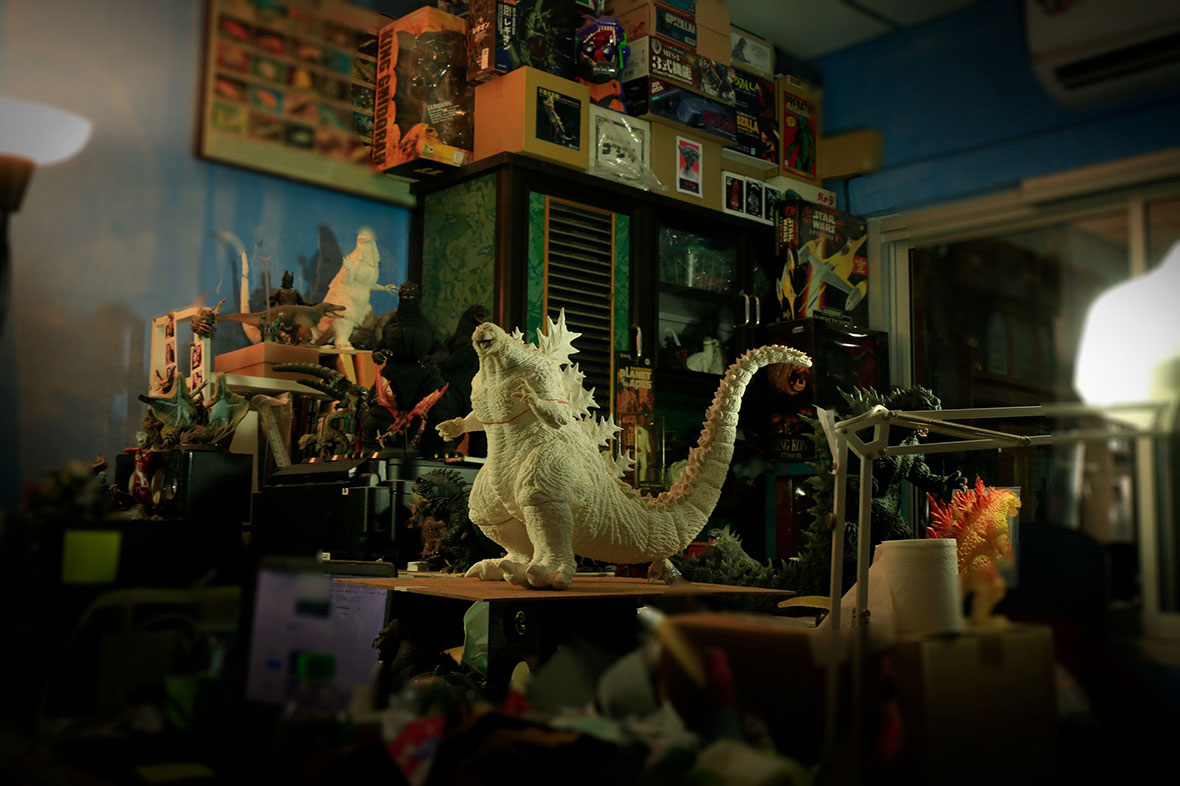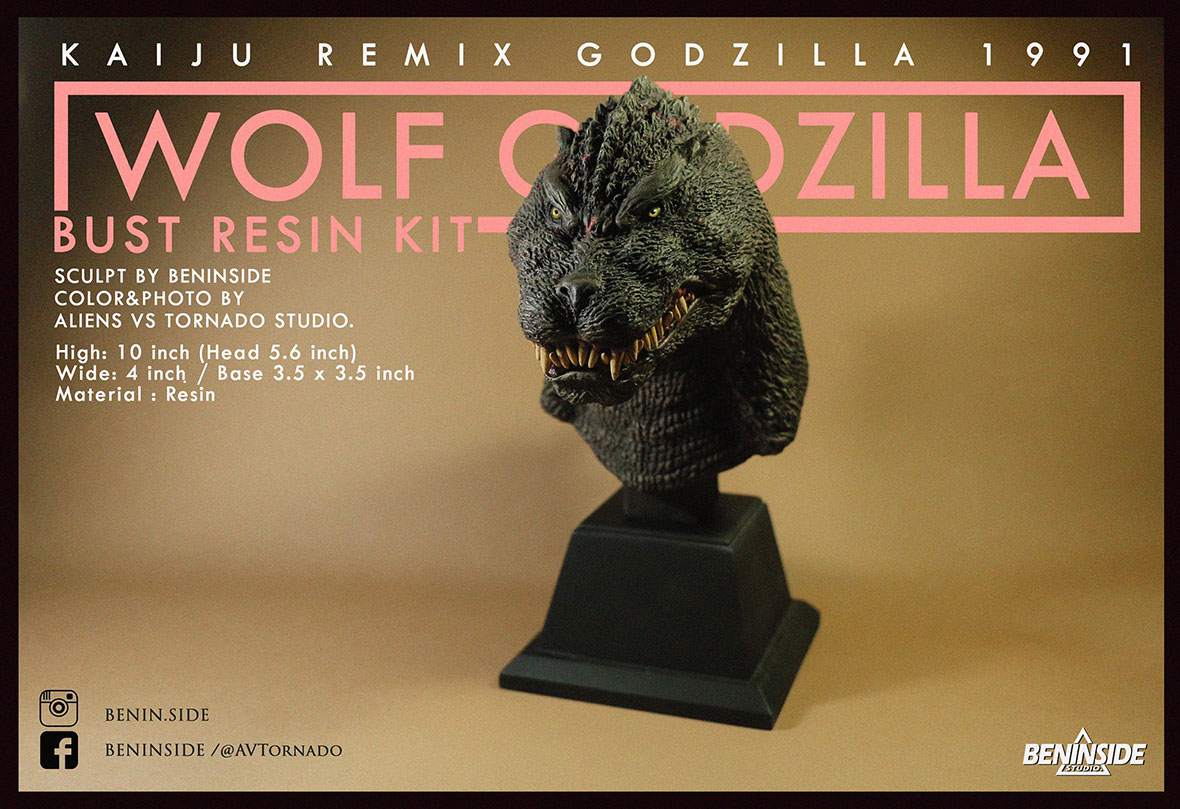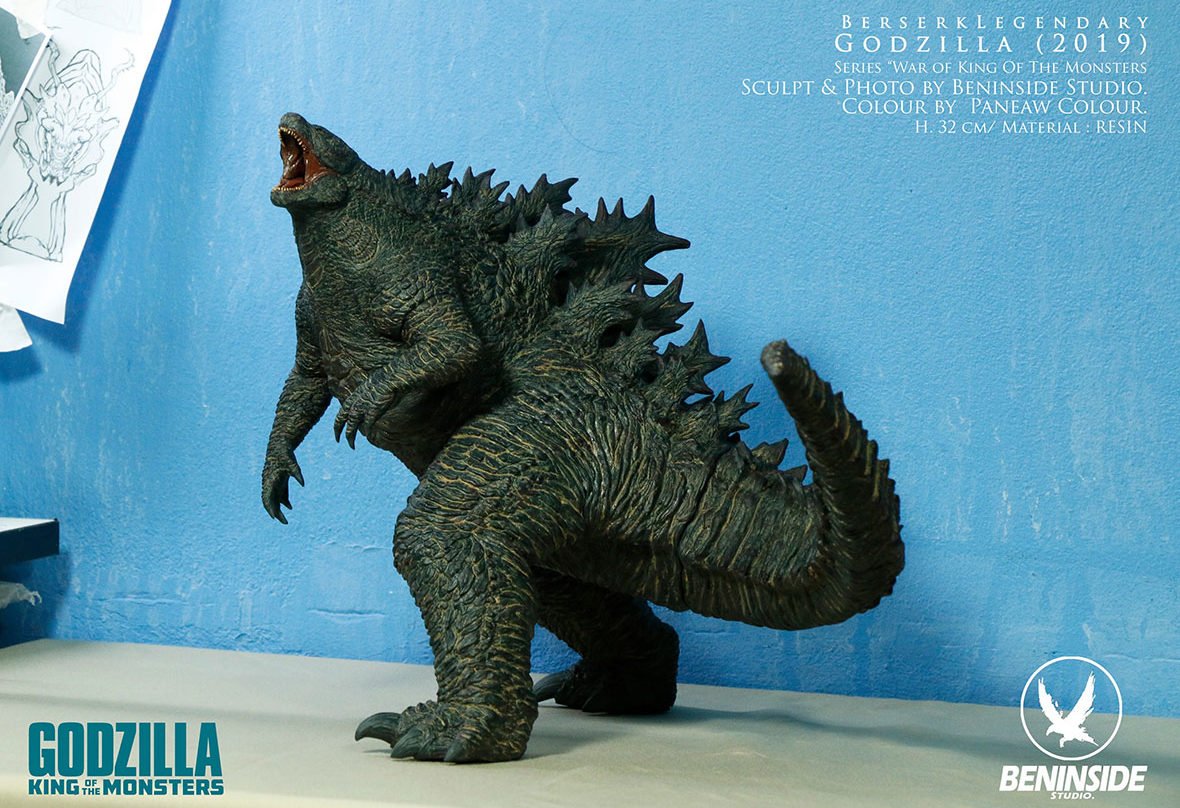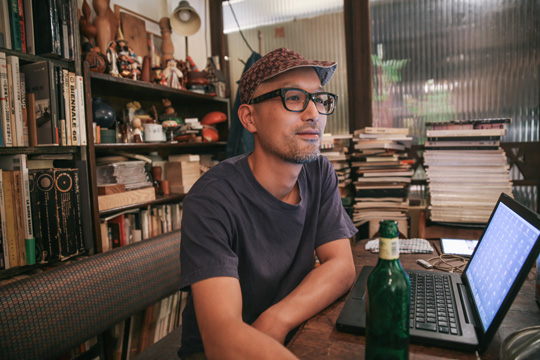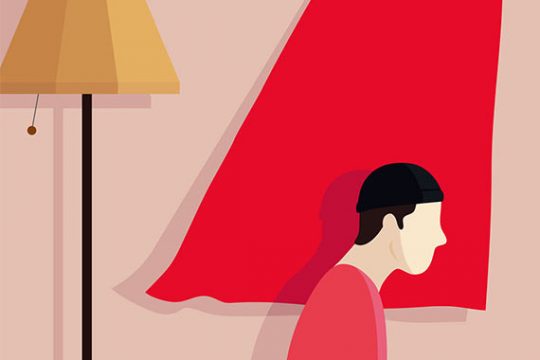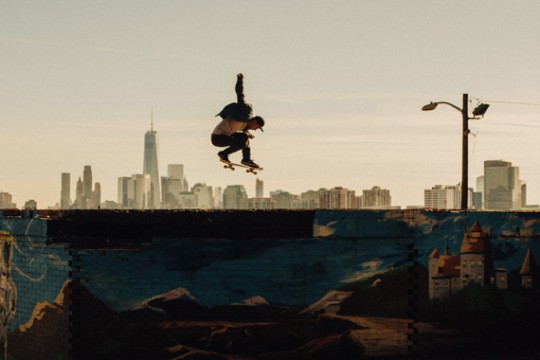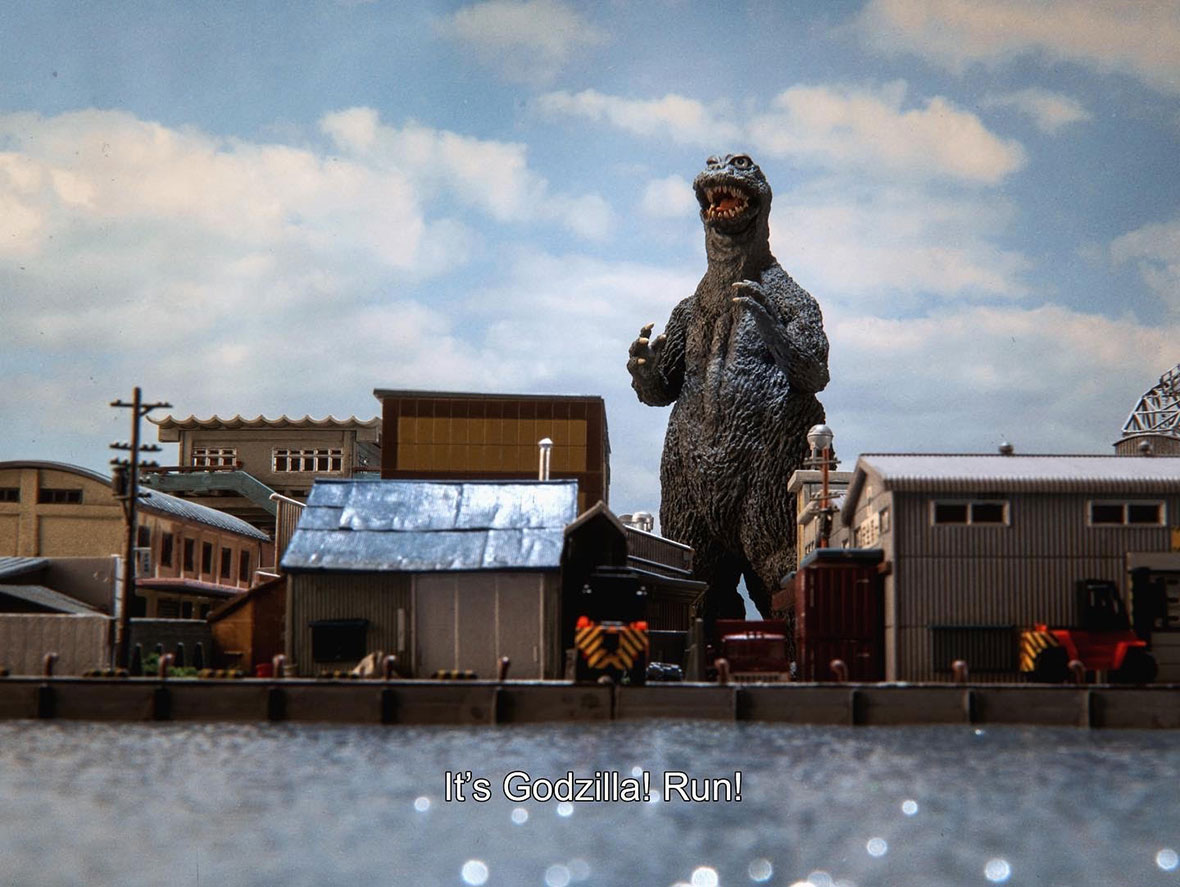
When Toho Studios introduced the heavy footsteps and terrifying roar of Gojira, the entire world trembled. For those outside Japan, albeit scary, the gargantuan monster was a creature typical of the B-grade horror movies that were starting to make the rounds, especially across the United States. At home, though, it was a reminder of the horror and devastation inflicted by the war less than a decade earlier.
It was 1954, and the nuclear nightmares of Hiroshima and Nagasaki were still painfully fresh in the minds of Japanese people. The similarities between the terror caused by Godzilla on the silver screen and the effects of an atomic bomb were not coincidental. Admittedly, the monster was created as a metaphor for the “terror of the bomb,” as director Ishirō Honda once said, and to warn people of the possibility of a nuclear holocaust.
The initial sequence alone, showing the crew of a freighter ship hit by the shock wave of a powerful and blinding blast, stood as a direct allusion to an incident that had happened earlier that year. The crew of the Daigo Fukuryū Maru, a Japanese fishing boat, was contaminated by radioactive material propelled by American nuclear detonation tests at Bikini Atoll in the South Pacific.
日本东宝制片的《哥斯拉》上映之时,一只巨型怪兽大杀四方,它拥有令人颤抖的咆哮与陨石般的步伐,于世人面前引起轰动。对于日本以外的观众来说,这庞然巨物不过是出现在低成本 B 级片里的怪兽罢了。然而,在当时的日本国内,这部影片却唤醒了人们对几年前那场战争的恐惧记忆。
影片上映于 1954 年,广岛和长崎的噩梦还萦绕在人们心中。银幕上的哥斯拉所带来的恐怖感与原子弹留下的阴影似乎并没有直接联系。然而正如影片导演本多猪四郎所说,这只怪兽原本就脱胎于“恐怖的核弹”,目的是为了警告人们可能发生的核战争。
影片开头,一艘货船在强烈爆炸所带来的冲击下摇摆不定。该场景所映射的,正是当年的另一起事件。当时的美国正于南太平洋比基尼环礁进行核爆炸试验,爆炸所产生的放射性物质导致福龙大悟丸号日本渔船遭受不幸。
Godzilla was born ominous, but the monster gained more lighthearted connotations with every reappearance, captivating audiences across the globe, especially kids. Godzilla became Japan’s first pop export phenomenon, a global merchandise triumph, and the star of the longest-running movie franchise in history. All this before the so-called “cool Japan” was even a thing.
The latest Godzilla film, Godzilla vs. Kong, was released in 2021 as the 36th film in the franchise, marking the 67th anniversary of the monster. With time, Godzilla and its movie franchise developed to define kaiju, the subgenre of tokusatsu that features monsters. In Japanese, kaiju means “monster.” Tokusatsu translates to “special effects.” That’s how we refer to Japanese action movies filled with practical special effects—think actors in suits fighting each other and destroying miniature cities.
尽管哥斯拉的诞生背景令人战栗,但之后却多次被重新搬上银幕,并逐渐朝更具娱乐性的方向发展,在全球各地揽获大批观众,其中儿童颇多。哥斯拉成为日本第一个现象级的流行文化输出,在全球取得了商业化胜利,也成为了历史上最长寿的电影角色。而这一切甚至发生“酷日本”(Cool Japan,是日本政府向海外推销国际公认的日本文化软实力所制定的宣传计划与政策)文化行销策略之前。
2021 年,最新哥斯拉电影《哥斯拉大战金刚》上映,这是该系列的第 36 部电影。这一年,是哥斯拉诞生的 67 周年。随时间推移,哥斯拉及系列影片的发展构成了怪兽电影流派,即以怪兽为题材的一类特摄影片。日语中,“kaiju”意为“怪兽”,“Tokusatsu”则意为“特摄”,用来指现场特效制作的日本动作片,譬如演员穿上道具戏服相互打斗,摧毁搭建的微型城市等等,六十年代开始发行的奥特曼系列便是典型的“特摄片”。
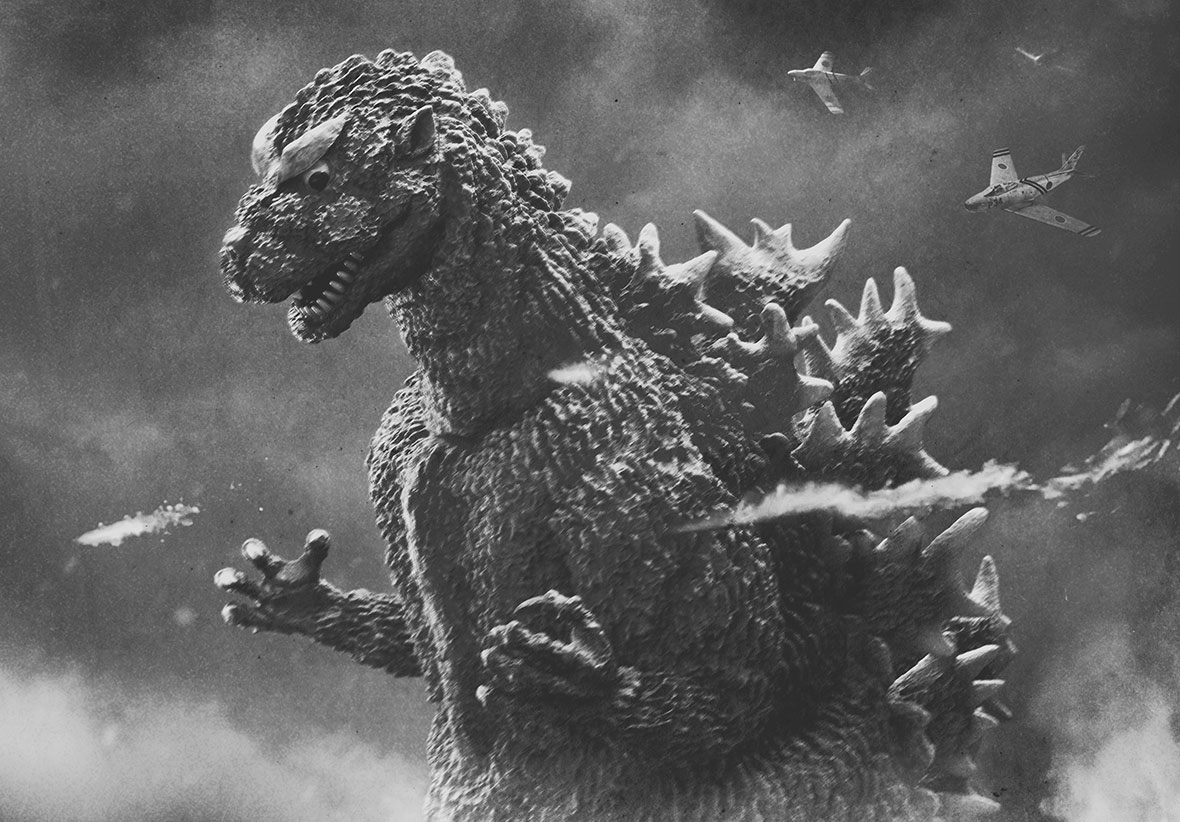
Godzilla movies are divided into eras: Showa, from 1954 to about 1975; Heisei, from the late 1980s to the mid-1990s; Millennium, around the millennium; and Reiwa, which still lasts until today. The monster didn’t terrorize the world alone for long. Godzilla was joined by countless other kaiju like the giant moth Mothra, the pterodactyl-like Rodan, the three-headed dragon Ghidorah, and even a familiar (and older) character, King Kong, who, not without some controversy, is generally considered kaiju. Godzilla even had to share the kingdom of kaiju with another icon that appeared intending to take some market share: Gamera, a fire-breathing turtle monster.
The list of monsters continues, and it’s seemingly endless. Each one bears an extraordinary power and a set of unique characteristics. These monsters captured the imagination of legions of dedicated aficionados spread across the globe. To them, kaiju and tokusatsu are more than a mere hobby or interest; they’re a way of life.
哥斯拉电影也有自己不同时代的划分:1954 年到 1975 年左右的昭和时代;1980 年代末到 1990 年代中期的平成时代;千禧年时代;以及持续到今天的令和时代。在这个演变的过程中,其他怪兽也陆续降临这个虚构的世界,如巨蛾魔斯拉、翼龙造型的拉顿、三头龙基多拉,另外还有更早出现且早已被观众熟悉的金刚——虽然对于金刚,人们争议比较多,但普遍还是将它归类为怪兽。另外,还有与哥斯拉齐名的加美拉,一只会喷火的龟形怪兽。只不过它的出现,纯粹是为了从怪兽影片市场中分得一杯羹。
新的怪兽角色不断涌现,每只怪兽各有各的亮点,吸引全球各地的怪兽爱好者,促使怪兽设计者们迸发出无穷的想象力。对于一些人来说,怪兽、特摄片不仅仅是一种兴趣爱好,甚至可以成为一种生活方式。
Ġużè Stagno
Collector, Photographer, and Showa-Era Devotee from Malta
Novelist Ġużè Stagno, aka Shane Piacevoli (a pun with spjaċevoli, meaning unpleasant in Maltese), wrote four very successful pop novels in his native Malta. But “tired of writing in a language spoken only by half a million people, of whom only a fraction was interested in reading books,” he took an extended sabbatical from the craft and moved to Belgium. It’s been ten years, and he has stayed there ever since. Now, Stagno works as an interpreter for European institutions.
In the intermissions of his profession, he collects and photographs kaiju and tokusatsu toys. “It’s part-time work but a full-time passion. Was poetry less important to TS Eliot because he wrote in the evenings after a day at the bank?” he smirks. More than a pastime, his photographs are a way for his art to reach more people. “Visuals are not constrained by language barriers. That, I think, is fantastic.”
Stagno knew about Godzilla growing up. The monster was already a “pop-culture juggernaut,” as he puts it, but it wasn’t an exceedingly popular figure in Malta. Even on Italian television, which Stagno could get from Malta if the weather were clear, Japanese classics like Godzilla and Ultraman were not aired very often. “What they did show was a third-rate Ultraman copy called Megaloman. The hero had this crazy Farrah Fawcett hairdo for some reason,” he laughs. “That was my introduction to tokusatsu.”
Ġużè Stagno
来自马耳他的收藏家、摄影师和昭和时代爱好者
小说家 Ġużè Stagno 曾撰写并出版过四本马耳他地区畅销小说。后来,因为“厌倦了用只有 50 万人讲的语言写作,并且其中只有一小部分人对读书感兴趣”,开始了一段漫长的休假,并搬到比利时长住下来。十年后的今天,他依然在这里生活。现在,Ġużè 为一些欧洲机构担任翻译。
闲暇之余,他喜欢收集并拍摄怪兽和特摄片玩具。他笑着说:“虽是一份兼职工作,却倾注了我全部热情。正如英国诗人艾略特(TS Eliot),他也是在银行工作了一天之后才在晚上写诗歌,难道诗歌对他而言就不那么重要吗?”摄影对他而言不仅仅是一种消遣,“照片没有语言障碍的限制。我觉得这一点很棒。”
Ġużè 从小就知道哥斯拉。用他的话来说,这只怪兽是“现象级的流行文化”,但在马耳他,哥斯拉的认知度并不是很高。即使是当地的海外电台,也很少会播放《哥斯拉》和《奥特曼》之类的日本经典影视作。“当时电视上总会播放一部名为《炎之超人》的山寨版奥特曼影片,”他笑着说,“这算是我第一部看过的日本特摄片。”
Still, his fascination with the genre didn’t come until he was already an adult, as a toy collector. “Like most working-class children of a certain age, I didn’t have many toys growing up, certainly not when compared to American kids,” he says. “Once I grew up and got a job, I started buying the toys we couldn’t afford back then. It started with Playmobil, then Japanese action figures.”
With time, his focus switched to kaiju and tokusatsu toys. This happened around the same time he began learning Japanese, and not coincidentally. “I was always a proponent of learning languages by consuming media. It’s how I learned Italian as a child, watching all those anime shows dubbed in Italian, and how later I taught myself French,” he says, adding that he learned much of his Japanese by watching the essential kaiju classics on Blu-ray.
Stagno quickly developed a preference for kaiju and tokusatsu shows from the Showa era. “I’ve always yearned for things that were before my time. I don’t know what it is with this nostalgia for a time and place you have never experienced directly. I think they call it ‘anemoia,'” Stagno says. Showa era Godzilla movies, for instance, are less dark than the two movies that came first and the overall look that took over during the Heisei era. They are colorful monster battles filled with wacky special effects. “All I can say is that I love the Showa aesthetics. Some fans prefer more modern versions because they are darker, whatever that means. Give me the dorky 1960s stuff any day, and I’m happy,” he says.
One day, a post on the fansite Kaijuaddicts caught Stagno’s attention. It was about train dioramas and the scale effect they gained when combined with Godzilla toys. The piece featured several photos taken by kaiju collectors as they attempted to recreate what they saw in movies and TV shows. It was a revelation, and he began doing the same.
而他真正迷上怪兽电影,其实是在长大成为一名玩具收藏家后。他说:“像大多数工薪阶层的孩子一样,我小时候并没有很多玩具,比起美国的小孩要少得多。长大工作后,我才开始买小时候买不起的玩具。日本的 Playmobil 可动人形玩偶是我最开始收藏的玩具。”
后来,他把目光转向怪兽和特摄片玩具,并开始学习日语。他说:“可能文化是语言的前提,我小时候就是看了意语配音的动画才开始学习意大利语,后来又用这种方式自学了法语。”如今累计的大多数日语,都是他在观看怪兽影片的过程中学会的。
Ġużè 尤其对昭和时代的怪兽、特摄片情有独钟。他说:“我一直都很喜欢旧时代的事物。不知道为什么,总会对一些自己没有亲身经历过的时代和地方充满怀旧之情。”昭和时代的哥斯拉电影,不如最早推出的两部影片和平成时代的哥斯拉那样黑暗。相反,这个时代融入了五花八门的怪兽战斗系统,同时还加入了电影特效。“我喜欢昭和时代的美学风格。有的粉丝更喜欢现代版本,因为风格更暗黑。但对我来说,1960 年代那种旧式风格更让我眷恋。”
一天,Ġużè 在怪兽粉丝网站 Kaijuaddicts 上看到了一篇文章。文章讲述了如何用哥斯拉玩具来制作实景和微缩场景。里面的照片展示了怪兽收藏家试图重现电影和电视节目中的场景。这让他灵光一现,也开始决定亲自动手。
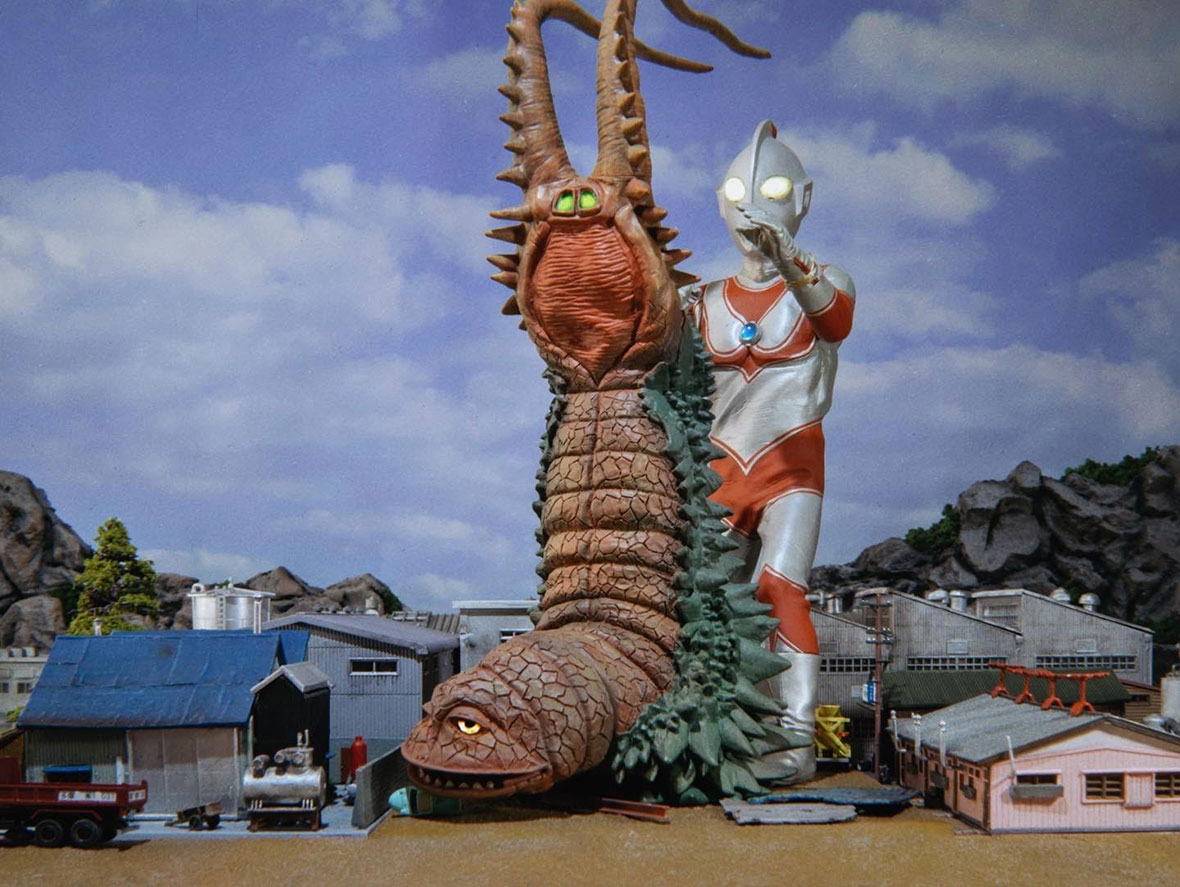
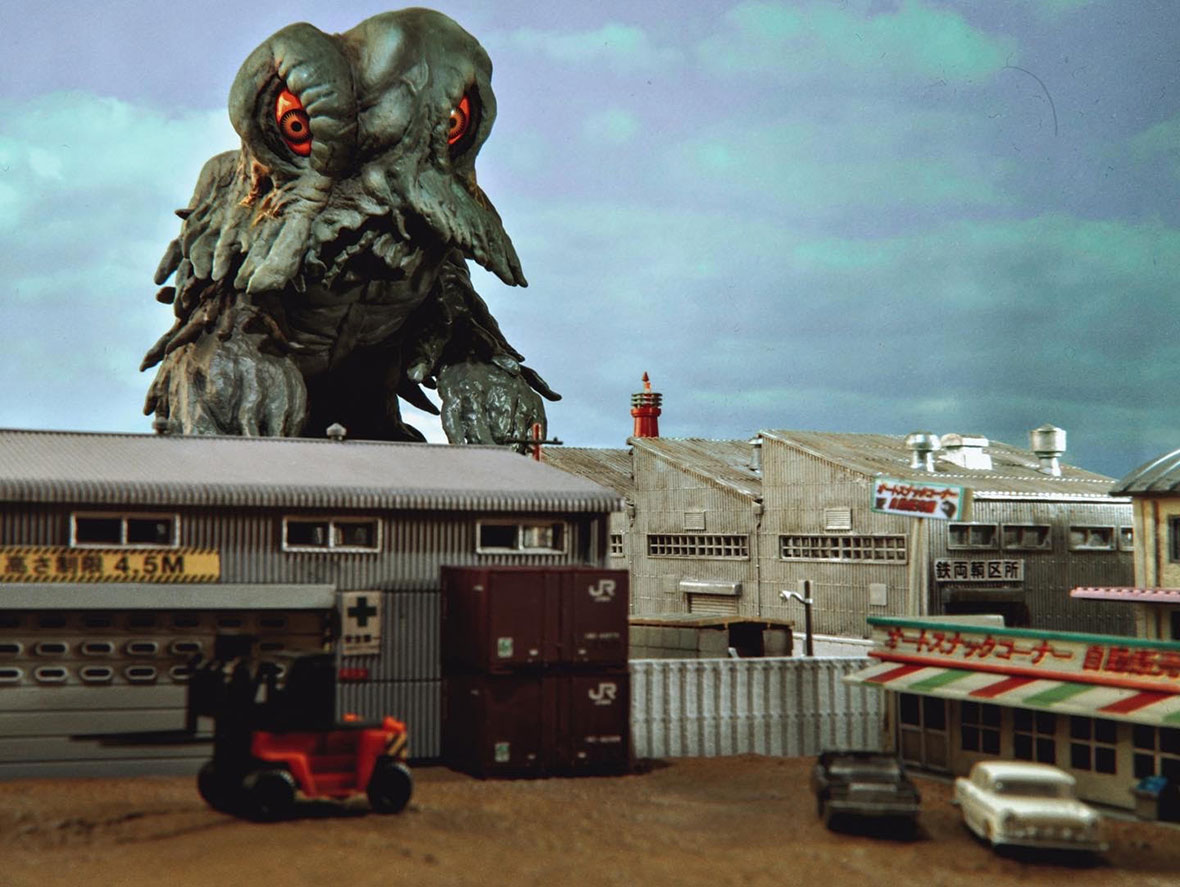
Stagno’s kaiju and tokusatsu photographs are an homage to the old shows he came to love so much. He attempts to go as close as possible to the Showa look, recreating minor details of the productions—including flaws. He incorporates the desaturated colors, grain effect, and imperfections from analog film into his photographs. Beyond that, he leaves intentional mistakes, such as uncovered bits of scenery, to break the illusion of reality, just as it occasionally happens on TV.
There’s more than pure love for the Showa era in his style, though; his inner rebel also comes out. “When I started kaiju photography, the fashionable thing was to produce these extremely slick shots, where everything’s shiny and bright, all high definition. I was never a fan of that look, and I wanted to do something different. Even nowadays that I work with a 50MP camera, the first thing I do in post is to turn the sharpness way down,” he says.
In his toy room-studio hybrid, Stagno has everything he needs. He shoots monsters like Bemular, Zetton, and Gomora.He also shoots Ultraman—a lot of Ultraman. His monsters look larger than life, but he sets them along with the dioramas on a piece of Ikea furniture in a corner, near a window that provides lots of natural lighting. His miniature buildings are by Tomytec, a Japanese maker of train dioramas. Stagno began shooting his toys with an iPhone 4, but he has upgraded. “I’ve been using a Leica, which gives my pictures a rather distinctive look. There’s nothing like Leica glass, as they say.”
借由拍摄怪兽和特摄照片,Ġużè 得以致敬他一直以来的热爱。创作中,他尽可能复刻昭和年代的影片风格,保留了当年的细节和瑕疵,为照片加入胶片效果的欠饱和色彩、颗粒感。除此之外,他还会像电视剧里经常看到的那样,故意留下了一些穿帮的细节,比如未遮挡好的场景,藉此营造现实与虚构的界限。
此外,他的作品还透露出内心的某种叛逆。“现在大众普遍很喜欢高清、色彩鲜艳的视觉作品。但这从来不是我的菜,我想做点不一样的。在发布这些照片前,我要做的第一步就是调低图片锐度,”他说。
Ġużè 拥有一个玩具收藏和创作共用的房间,里面有他所需的一切。他曾经拍摄的怪兽有百慕拉、宇宙恐龙杰顿和古代怪兽哥莫拉等,也拍摄了不少奥特曼题材作品。所用的微缩建筑场景,来自日本实景模型制造商 Tomytec。Ġużè 刚开始用 iPhone 4 手机拍摄,后来才慢慢升级装备。“我现在改用徕卡拍,拍出的照片也很特别。”
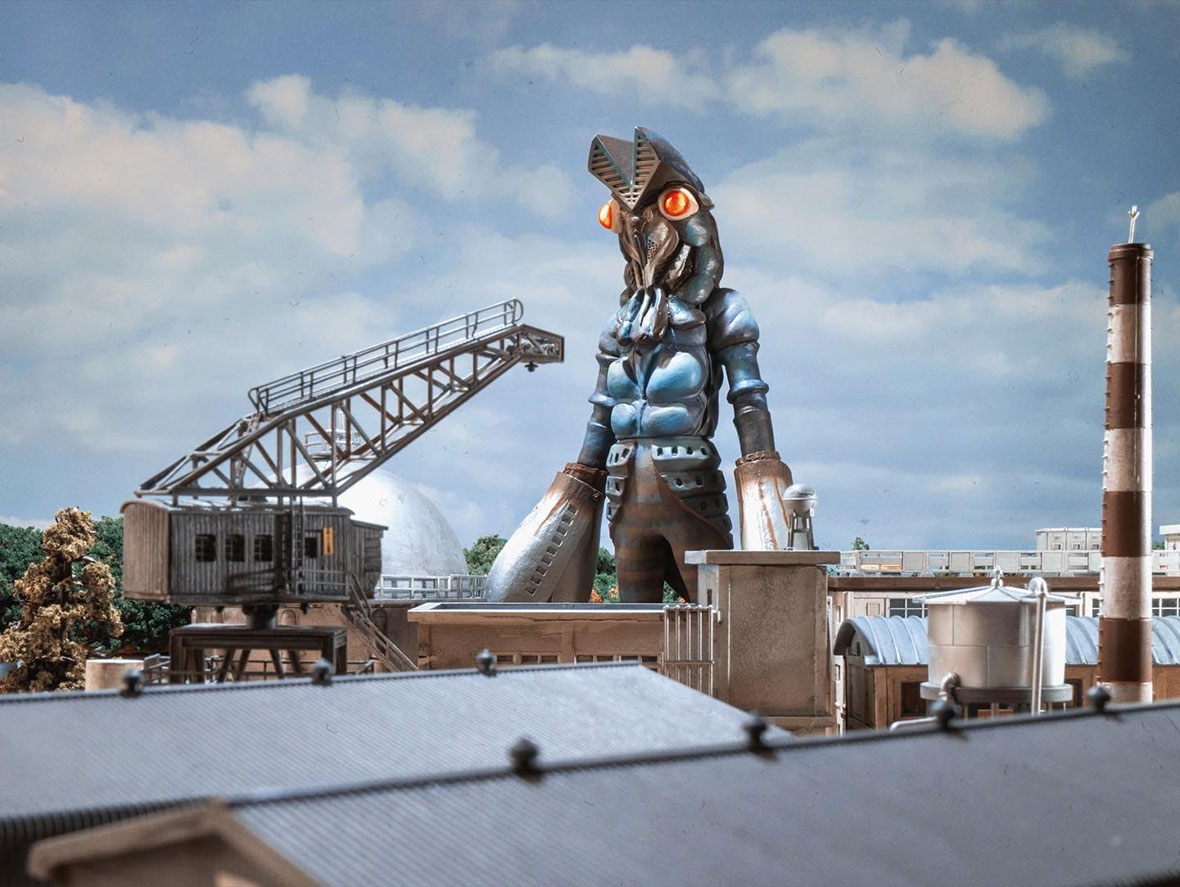
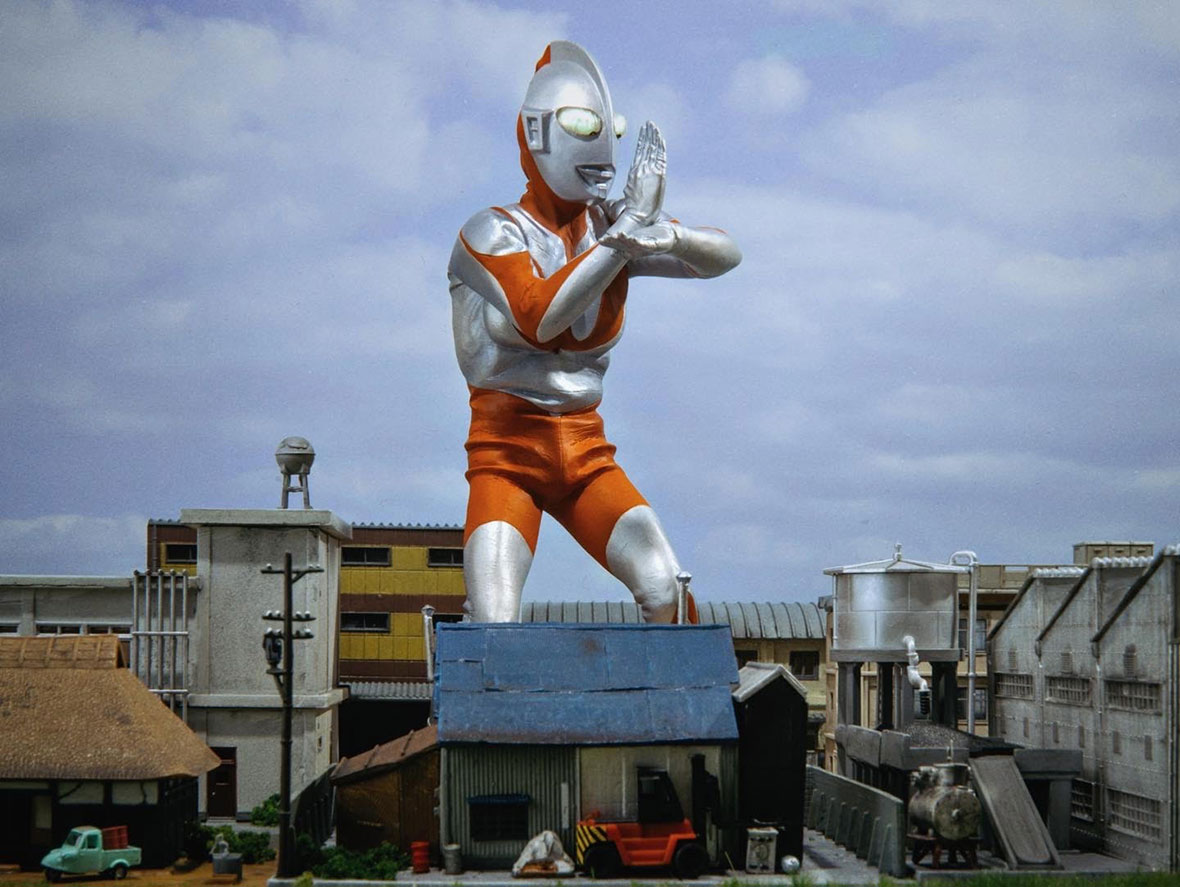
Recently, Stagno began selling his old toys to buy highly detailed kaiju X-Plus figurines based on the suits that kaiju actors wore in the shows. They include little details such as zippers and even holes for the eyes. These are exceptionally niche products, and he has to buy them directly from Japan.
Admittedly, Stagno is a bigger fan of Ultraman than he is of Godzilla. Kaijus from the Godzilla franchise come in second place. “The Godzilla stuff interests me much less, at least from a narrative point of view. I find the average plot in an episode of Ultraman much more interesting than anything the scriptwriters for Godzilla ever came up with,” he says.
Stagno is taking interesting experimental directions with his photography. He’s been incorporating elements of his literary work—marked by irony and dark humor—into his photographs. “It’s a work in progress. How it will turn out, we will have to wait and see,” he says.
最近,Ġużè 开始于线上出售旧玩具,以换购 X-Plus 巨兽系列,这个系列的模型细致还原了影视作品里怪兽演员所穿的道具,可谓细节满满,譬如拉链和演员眼睛位置的开孔。由于这些产品非常小众,他只能直接从日本购置。
坦白讲,比起哥斯拉,Ġużè 更喜欢奥特曼。哥斯拉系列的怪兽在他心中只能排行第二。他表示:“起码从叙事角度来看,我对哥斯拉的兴趣要小得多。在我看来,即使是《奥特曼》里平平无奇的一集故事,也比哥斯拉的编剧写的任何故事更有趣。”
如今,Ġużè 实践各种不同的摄影技巧,并将自己文学作品里的讽刺和黑色幽默元素融入摄影作品中。他说:“现在还在尝试中,至于结果如何,我们拭目以待吧。”
John Ruffin
Kaiju Fanatical and Official Godzilla Photographer from the USA
After graduating from a theological seminary in 2008, John Ruffin fulfilled his longtime dream of moving to Japan, where he stayed until 2014. He’s the creator of MyKaiju.com, an online platform for all things kaiju, and MyKaiju magazine, a print fanzine for toy photographers, fans, and collectors. Ruffin is also an official Godzilla photographer, which means his work is approved and recognized by Toho Studios to become box art for licensed products—not bad for someone who grew up obsessed with Godzilla.
Unlike Stagno in Malta, growing up in Philadelphia during the 1970s, Ruffin could lose himself in daily tokusatsu shows. During the week, it was Ultraman, The Space Giants, Giant Robo, Astro Boy, Marine Boy, and many others. “I pretended to be every character: I dreamed of becoming Ultraman with the click of the beta capsule. I wanted to blow a whistle to call for Magma Taishi. I put on my father’s watch to command Giant Robo to fight,” he recalls.
John Ruffin
来自美国的怪兽发烧友和官方认证的哥斯拉摄影师
2008 年从神学院毕业后,John Ruffin 实现了自己一直以来到日本生活的梦想,并在那里一直呆到了 2014 年。他创建了以怪兽为主题的 MyKaiju.com 网站以及 MyKaiju 杂志(一本面向玩具摄影师、粉丝和收藏家的纸质杂志)。此外,John 也是一位获官方认证的哥斯拉摄影师。他的作品获得东宝制片认可,被用来参与授权产品的箱绘设计。这对于一个从小热爱哥斯拉的粉丝来说,这可以说是相当不错的理想差事。
不同于马耳他的 Ġużè,20 世纪 70 年代在费城长大的 John 每天都能沉迷于收看电视上的日本特摄片。平时,他还能看到《奥特曼》、《熔岩大使》、《铁甲人》、《阿童木》、《海底小游侠》等经典影视作品。“我会幻想自己是里面的角色,幻想变身奥特曼,或是吹一下笛子就变成熔岩大使。我还会戴上我爸爸的手表,假装命令铁甲人去战斗,”他回忆道。
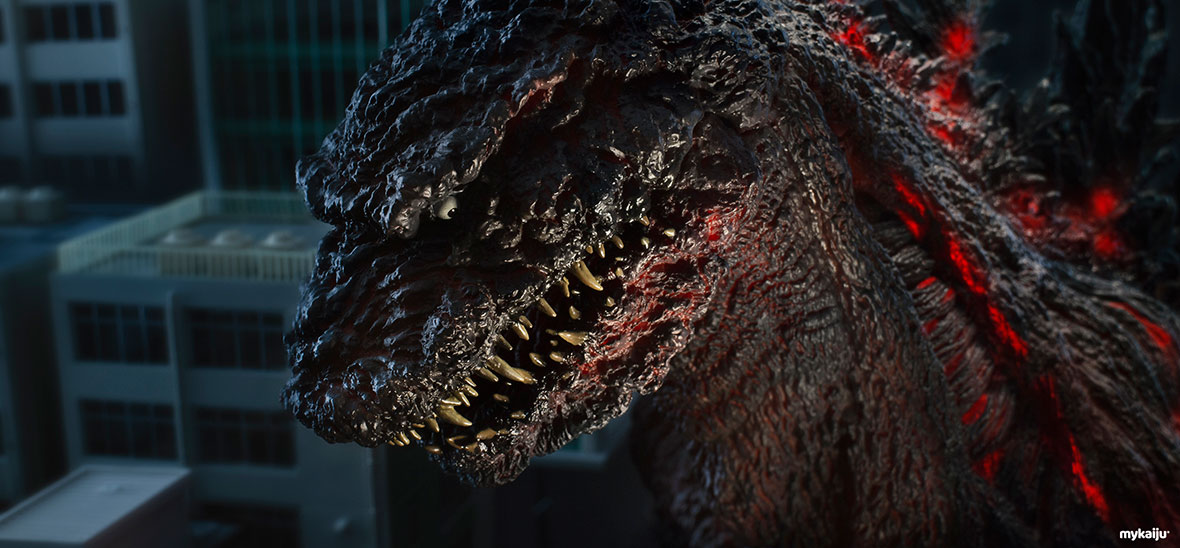
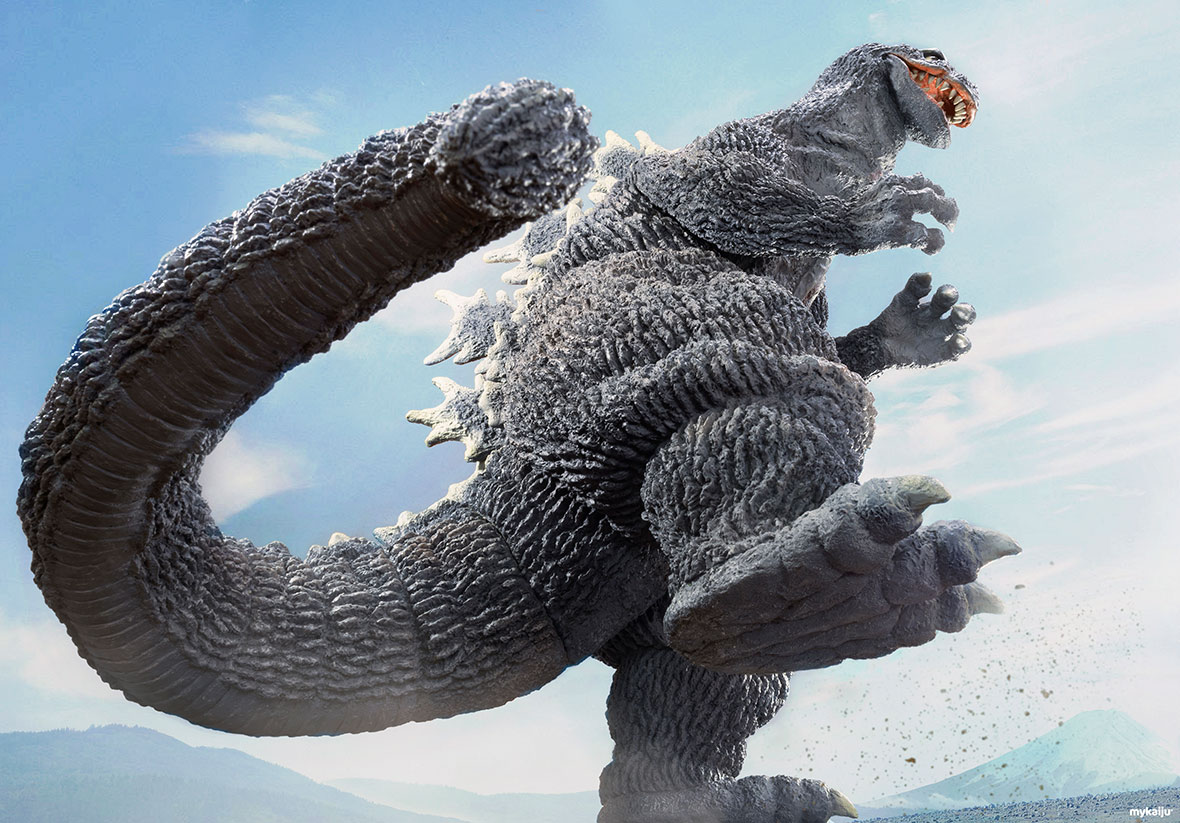
On weekends, his attention turned to Godzilla, a recurring character in programs featuring horror and sci-fi movies. His enthusiasm was such that he would record the movies, first on audio tapes—to listen to them repeatedly while reimagining the plots—then on video cassette tapes. “The mature topics of the stories left a powerful impression on me and shaped my ideas about good and evil, right and wrong,” Ruffin says.
Ruffin’s devotion to kaiju only grew stronger. In the 1990s, he used early graphic software like MacDraw and Adobe PageMaker to create kaiju magazine mock-ups. “I did paste-ups with photocopies and printouts as if I was going to press,” he laughs. He shared his passion with friends, shopping for collectibles, attending conventions, and even taking trips to Japan together. Through the years, he loved seeing Godzilla’s appearance changing and the evolution of the visual effects used in the movies.
每到周末,他就会看《哥斯拉》,在各种恐怖片和科幻电影里总是能看到这只怪兽的身影。他甚至尝试将影片刻录,刚开始只是录音,然后一边反复收听,一边在脑海里重复情节,后来改用录像带刻录。John 说:“影片里探讨的那些严肃话题给我留下了强烈的印象,也塑造了我对善与恶、对与错的观点。”
John 对怪兽的热爱越来越强烈。到了 20 世纪 90 年代,他开始使用 MacDraw 和 Adobe PageMaker 等早期图形软件来制作怪兽杂志模型。“我用复印和打印纸材来制作拼版,一次就印好多,搞得自己像个发行商,”他笑着说。他还因此结识了一群志同道合的朋友,一起买收藏,一起参加会展,一起去日本旅行。这些年来,看到哥斯拉随时代不断演变,他感到十分欣慰。
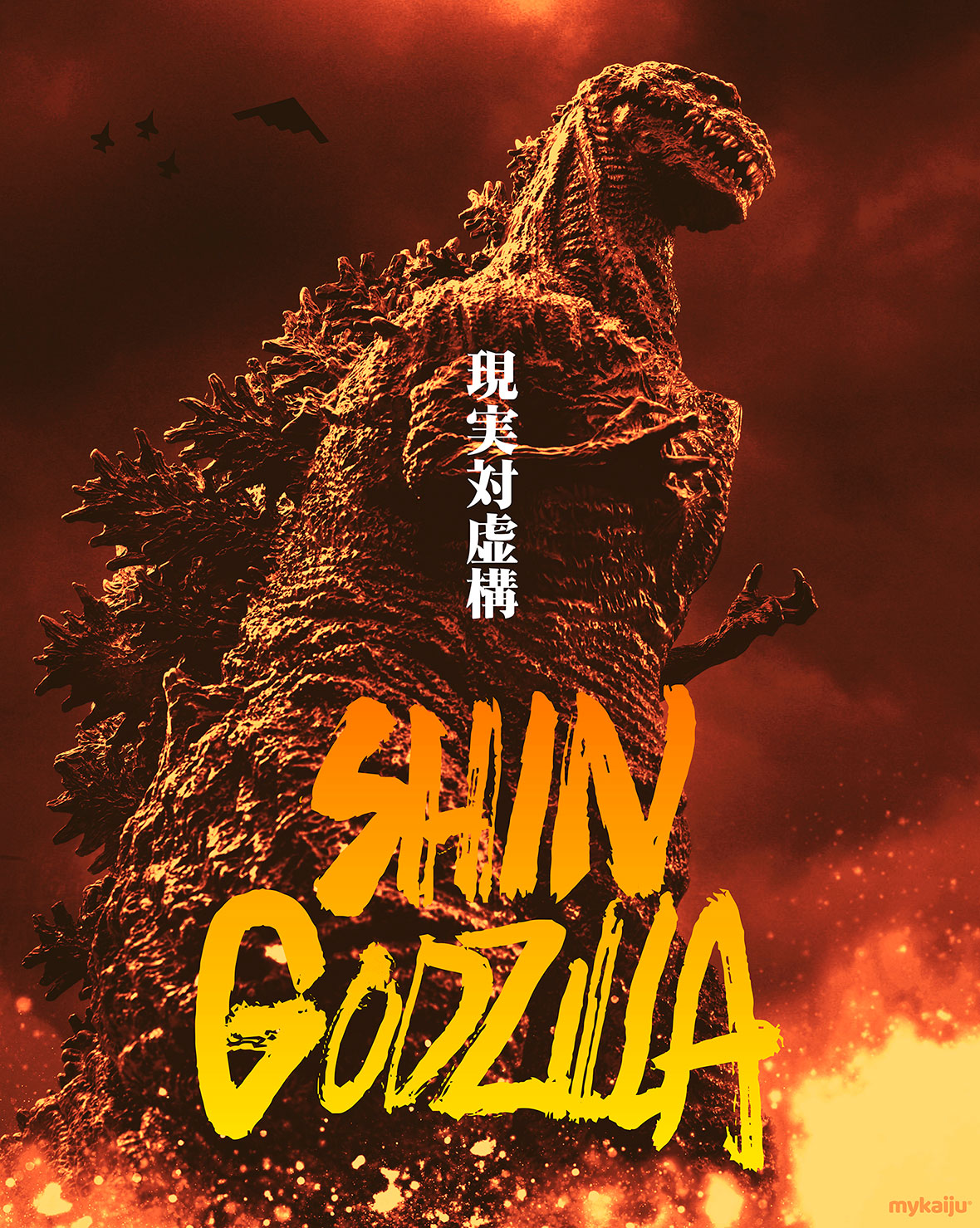
However, as some of his friends shelved their old kaiju movies, seduced by the new blockbusters released year after year, Ruffin remained faithful to the Showa era. “Maybe I’m biased by my childhood, but I will always love the Showa movies more, followed by the Heisei series. The charm and appeal of the tokusatsu miniatures are unmatched by later technology,” he says, noting that, from the most recent movies, only Shin Godzilla from 2016 holds a special significance close to the early movies.
Ruffin followed the debate that came with CGI technology replacing the practical effects that defined tokusatsu, such as suit acting and miniature scenarios. To him, suit acting is inextricable to the metaphor of Godzilla. “I see Godzilla and other kaiju monsters as our victims. They’re scapegoats that pay for our sins. Humans are responsible for the monsters we fear and seek to destroy. Godzilla’s human gestures and qualities created by suit actors remind us of the human victims of the atomic bombs,” he says.
当身边朋友逐渐将旧版怪兽电影置之脑后,转而追求特效时,John 却一直忠于昭和时代的怪兽影片。他说:“也许是受小时候影响,我一直都更喜欢昭和时代的作品,其次是平成时代的作品。特摄片和微缩模型的魅力是现在的高科技所无法比拟的。”他指出,在近期的怪兽电影中,只有 2016 年的《新哥斯拉》能比肩早期的怪兽电影。
同时,John 也关注 CGI 技术取代道具表演、微型场景等特摄片独有的现场特效的争论。对他来说,道具表演与哥斯拉所隐含的意义密不可分。“在我看来,它们是为人类罪恶赎罪的替罪羔羊。对于这些人们所恐惧并试图消灭的怪物,人类本身负有不可推卸的责任。道具演员赋予了哥斯拉一些人类的姿态和特点,令人联想起原子弹爆炸中的人类受害者的形象,”他说道。
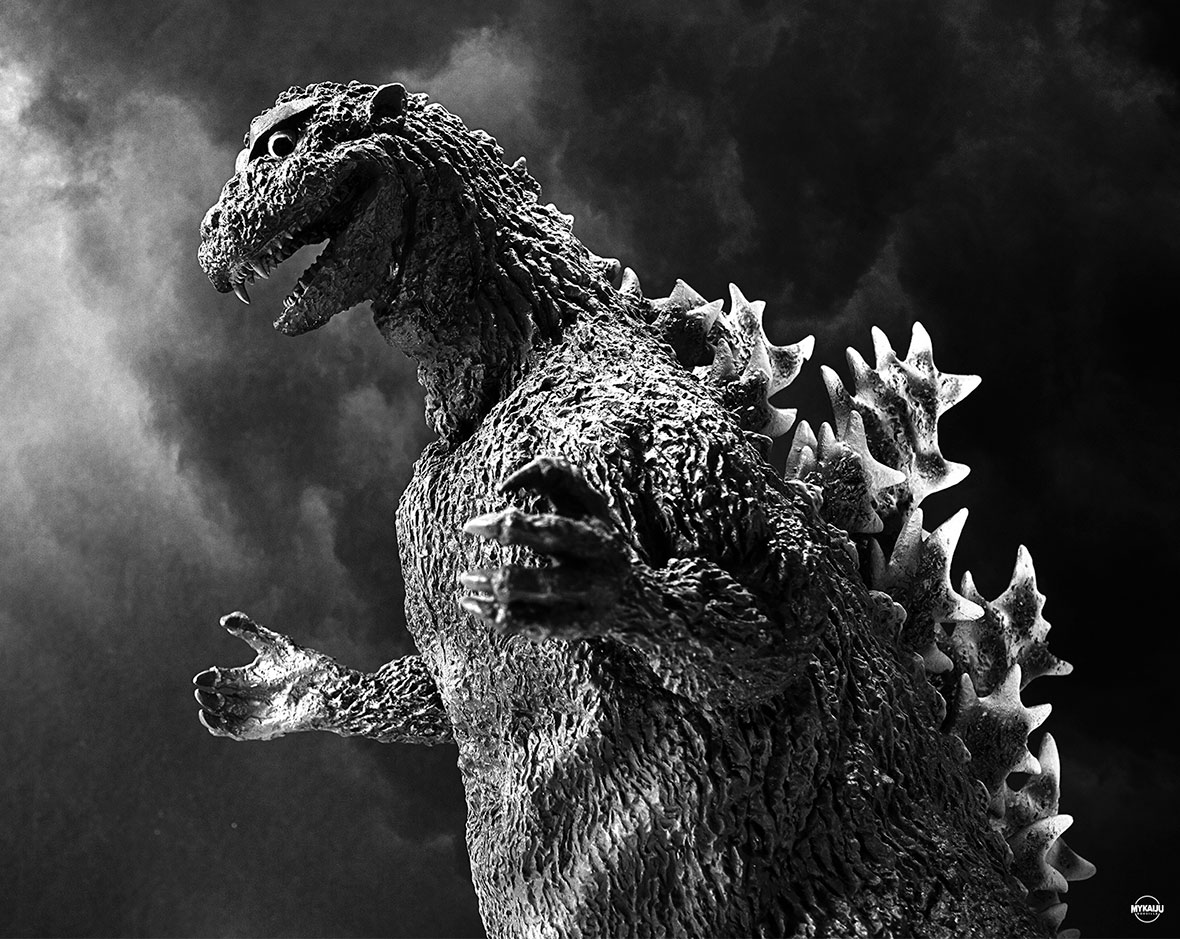
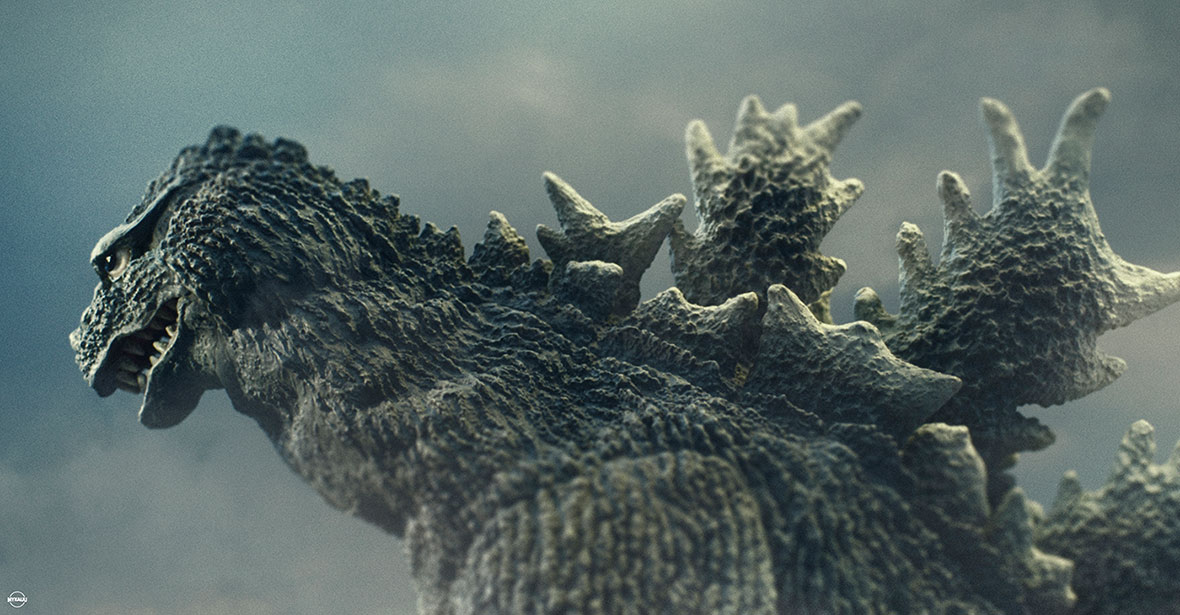
Even though the broader public doesn’t know them, Godzilla suit actors are considered legends inside the fandom. As Ruffin explains, there’s more to the job than it seems. Haruo Nakajima, for instance, the first Godzilla suit actor, had to study the motion of elephants and bears before entering his heavy suit. Ruffin also says that each actor left their mark on the character: a careful eye can distinguish their different personalities, mannerisms, and approaches to animating Godzilla.
Ruffin’s first visit to Japan was in 1994. It was a proper Godzilla tour, including everything he wanted to see and buy. His top priority was seeing Godzilla vs. SpaceGodzilla on the silver screen. “It was an out-of-body experience,” he says. “I watched it three times. The closing track, Echoes of Love, is etched into my memories. This trip changed my life.”
Interestingly, when Ruffin saw the original movie from 1954 as a kid he didn’t like it. “It was too dark and sad. It just wasn’t the ‘Godzilla’ I liked,” he says. It was only in 2014, during his last year living in Japan, that he decided to give it another go, and this time, he was overwhelmed by what he saw. By then, with broader philosophical knowledge, Ruffin could perceive new meanings behind the character, unsurprisingly more apparent in the original movie than in any other. “I was watching Godzilla again for the first time. I could better understand what it means to be a monster, where they come from, and why we need them.”
大众或许并不知道哥斯拉外衣之下的真人演员,但在粉丝眼中,他们都是传奇人物。John 认为,这份工作比表面看起来要复杂得多。例如第一位哥斯拉演员中岛春雄,他在披上厚重的道具之前,总会先仔细研究大象和熊的行进动作。John 还指出,每位演员都曾在角色上留下自己的印记:通过仔细观察,你可以区分出不同演员的不同性格、作风和饰演哥斯拉的方式。
John 第一次去日本是在 1994 年。这是一次名副其实的哥斯拉之旅,他的所有游览和购物都围绕着哥斯拉展开。对他来说,绝对不能错过的就是到电影院去看《哥斯拉决战太空哥斯拉》。他说:“这是一种梦幻般的体验,我一共看了三次。片尾曲《爱的回声》(Echoes of Love)深深地烙在我的记忆里。这次的旅行改变了我的生活。”
有趣的是,John 小时候第一次看到 1954 年的初版哥斯拉电影时其实并不喜欢这部影片。“整部电影太黑暗,太悲伤。那不是我喜欢的哥斯拉,”他回忆道。直到 2014 年,在日本生活的最后一年,他才决定再给这部影片最后一次机会,而这一次,这部影片却带给他超乎想象的感受。此时的 John 掌握了更丰富的人文哲学认知,他第一次理解到角色背后的含义,而且毋庸置疑,这些含义在初版哥斯拉电影中体现得更加明显。“那时候,我才算是真正第一次看懂《哥斯拉》。我更加了解了成为怪物意味着什么,它们来自哪里,以及我们为什么需要它们。”
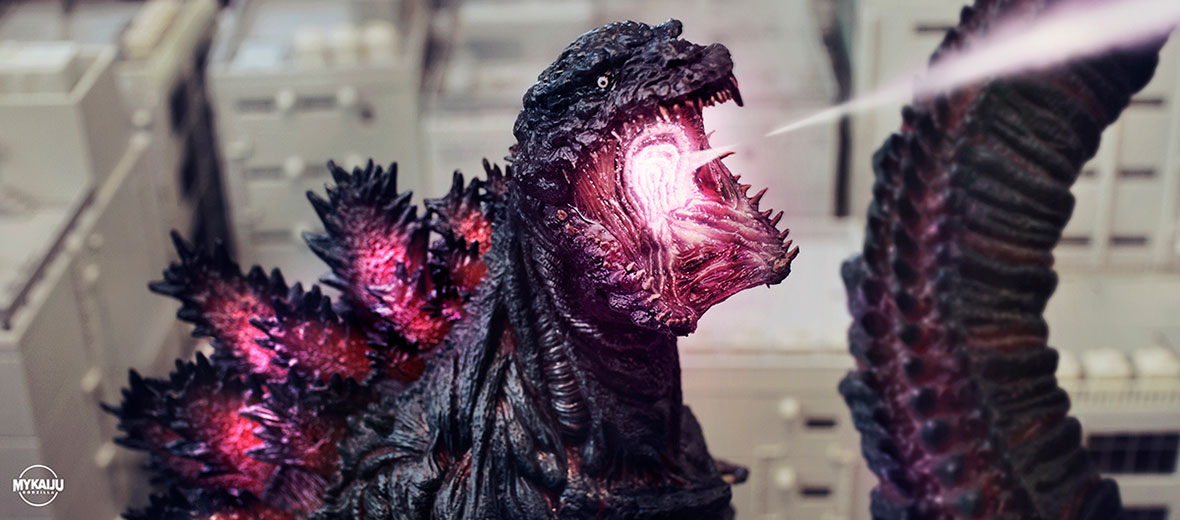
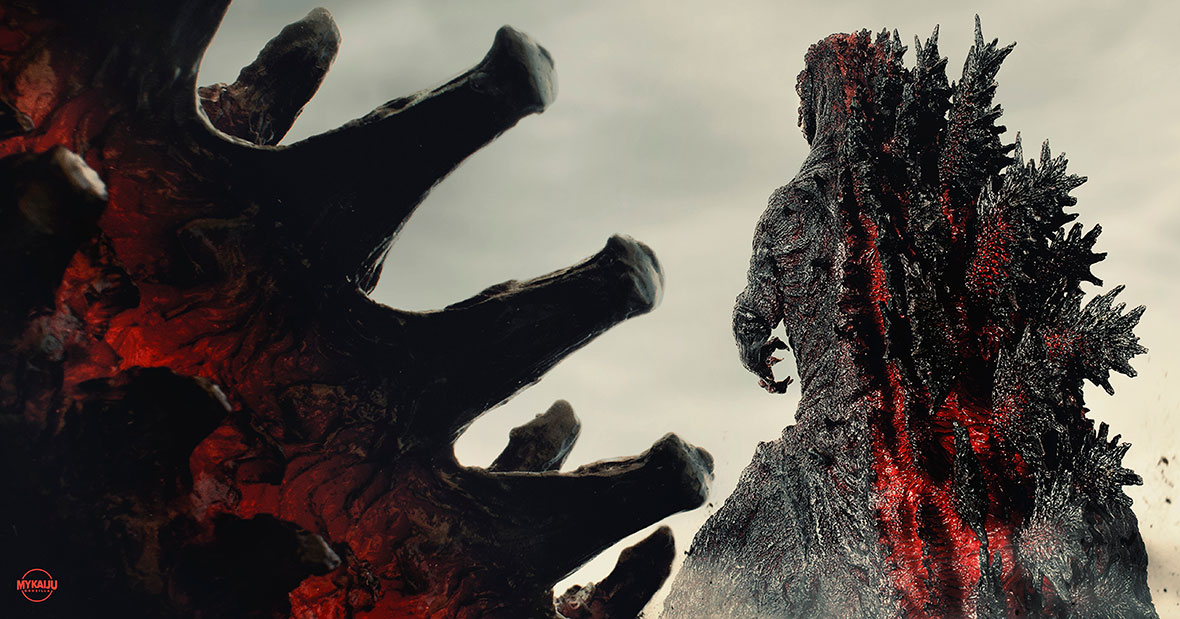
One thought kept looming in his mind: for Japanese audiences in 1954, to watch Godzilla on the big screen was not a regular lighthearted experience, as you would expect from going to the movies, but a way to relive the horrors of a not-so-distant past. “This new terrifying monster reminded them of what had happened earlier that year,” he says, referring to the incident with Daigo Fukuryū Maru. “Godzilla was also the embodiment of the atomic bombs of Hiroshima and Nagasaki nine years before. Moviegoers would leave the theater with a dire warning against nuclear proliferation and the creation of new weapons of war.”
Three years before, as he was living in Karuizawa, Ruffin himself had experienced a fury similar to Godzilla’s. “It was the first time I experienced an earthquake, and I pray it will be my last. That day the metaphor of Godzilla made sense and became real,” he says.
On March 11, 2011, at 2:46 pm, with a magnitude of 9.1, the Tōhoku earthquake struck near the East coast of Japan. It caused a tsunami with waves up to 40 meters, a nuclear disaster unleashing toxic and radioactive materials into the environment, widespread destruction, and a death toll of nearly 20,000 people. Ruffin remembers everything vividly: the school building he was at shaking violently with the tremor, the evacuation that ensued with other school teachers and students. “It was the day I met Godzilla. Later, watching the tsunami’s waves on TV was like watching Godzilla coming ashore,” he says.
一个念头在他脑海中不断浮现:对于 1954 年的日本观众,在大屏幕前观看《哥斯拉》或者并不是一次愉快的观影体验。“不仅仅是福龙大悟丸号渔船事件,哥斯拉也是 9 年前广岛和长崎原子弹的化身。观众在离场时,也会收到关于对核扩散和制造新战争武器的严厉警告。”
2011 年,John 在日本轻井泽生活时,曾亲身经历了一场哥斯拉般的“颤栗”。“那是我第一次经历地震,我希望也是最后一次。那一天,我深刻理解了哥斯拉的隐喻,”他说道。
2011 年 3 月 11 日下午 2 时 46 分,日本东海岸附近发生了东日本大地震,震级达到了 9.1 级,同时引发海啸,波浪高达 40 米,更造成了一场核灾难,导致有毒和放射性物质泄露到环境中,造成大范围的破坏以及近 2 万人丧生。John 清晰地记得当时的一切:他所在的学校大楼剧烈摇晃,他与其他教师、学生一起被迫疏散。“那一天的我遇到了哥斯拉。后来在电视上看到海啸时,仿佛真看到了哥斯拉上岸的情景,”他说。
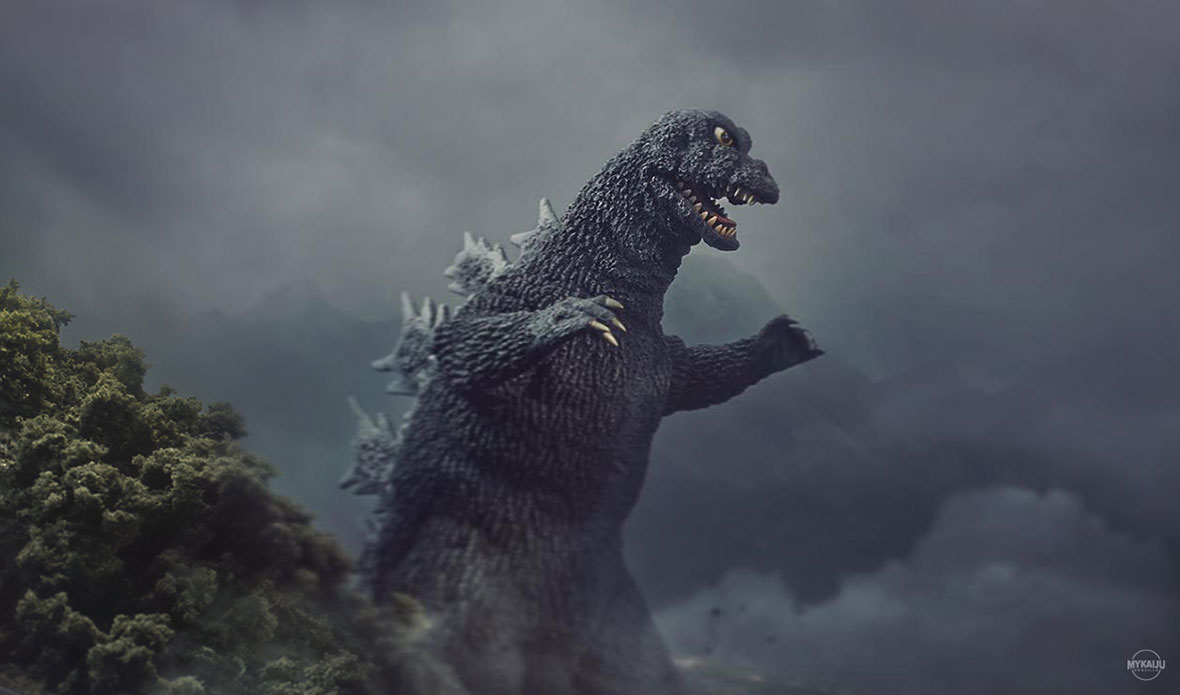
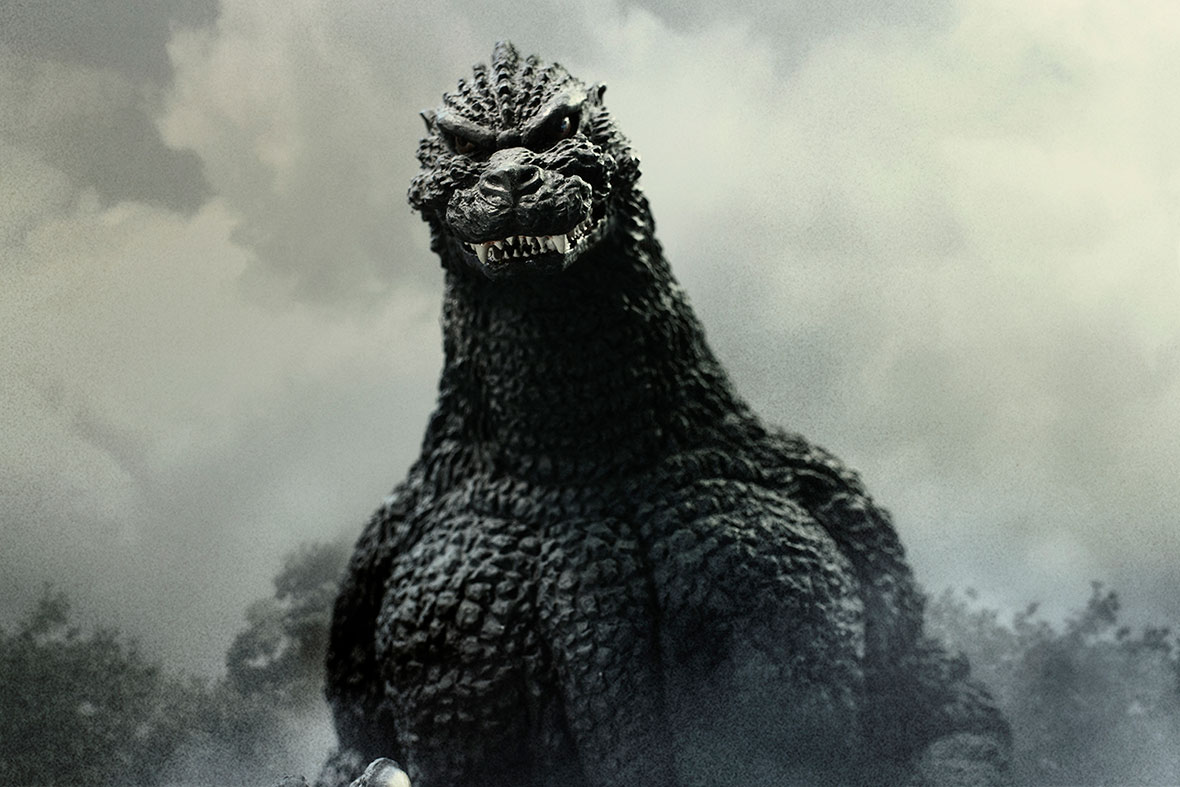
Such an experience explains his regard for Shin Godzilla, released in the earthquake’s aftermath. Once more, Ruffin was in Japan for the release in 2016. “I squirmed in my seat as I watched. It was like reliving all the pinned-up fears and anxiety I had from March 11,” he says. To him, the monster developing in shape and size was like the danger of Fukushima growing, and the frozen Godzilla in the middle of Tokyo represented how nuclear reactors remain a threat. “Just as Godzilla 1954 did for postwar Japan, Shin Godzilla has done for post-3/11. Godzilla continues to function as a vehicle to revisit, relive, and reckon with tragedy,” Ruffin says.
Still, Ruffin doesn’t see Godzilla as a source of evil. He believes that the symbolism behind the monster needs to be carefully unpacked. “Godzilla is a mirror of what we as humans do. Our societies and cultures have many forms of harm and violence, creating our’ monsters.’ We have to get better at finding the real sources of evil. If we pay close attention, watching Godzilla and tokusatsu can help us do that,” he says. In the end, Godzilla might very well be our savior.
经历这一切后,他怀着敬畏心前往影院观看《新哥斯拉》。“观影时,我在座位上不安地将自己蜷缩起来。我感觉自己像在重新经历 3 月 11 日那场大地震,带给我相似的恐惧和焦虑。”在他看来,这只在形状和体型上更加庞大的怪兽仿佛就是福岛日益增长的危机,而影片最后,被冻结在东京市中心的哥斯拉所代表的则依然是威胁人类的核反应堆。John 说:“从 1954 年在战后日本出现的哥斯拉,到3.11大地震后出现的新哥斯拉,哥斯拉继续充当一个媒介,带领人类回顾、重温和思考所发生的悲剧。”
John 认为哥斯拉并非是邪恶的源泉。他觉得这只怪兽背后是具有象征意义的,观众需要仔细探究才能察觉。“哥斯拉是人类的一面镜子。我们的社会和文化里存在许多种形式的伤害和暴力,这些伤害和暴力构成了社会的‘怪兽’。我们必须找到真正的邪恶根源。观看哥斯拉和特摄片有助我们做到这一点,”他说,“说不定,哥斯拉会成为我们的救星。”
Benjapol Parosin
Kaiju Sculptor and a Friend of Godzilla from Thailand
Born in 1993, Benjapol Parosin grew up in Chonburi, a seaside town about an hour’s drive from Bangkok, where he’s still based. His dream was to work on special effects for monster movies, but he worked as a makeup artist for the same repetitive romantic productions, mostly making scars and aging actors. About five years ago, he took a leap of faith and quit his job to become a professional monster sculptor.
Benjapol’s fondness for monsters started when he was only a boy as he watched tokusatsu shows such as Ultraman and Kamen Rider, both popular in Thailand in the late 1990s. But to him, the monsters always stole the show from the heroes. “I liked Ultraman only because of the monsters,” he says.
Growing up, he had a cousin who worked in a movie rental shop, letting him pick whichever title he wanted from the shelves. “What always caught my attention was the cover art of horror movies and monster movies. You can say I grew up watching B-grade American monster productions,” he says. Benjapol would not only watch but also draw posters inspired by the VHS covers he picked; Some notable ones were Alien, from 1986, Lake Placid, and Deep Blue Sea, both from 1999.
A particular cover that caught his attention was the 1998 version of Godzilla, the first American movie of the franchise, produced by TriStar Pictures. “That’s when it all started,” he says. “I was crazy about it, and I even began imitating Godzilla. His walking, breathing, and eye movements. Although it was more of a mix between him and the velociraptor from Jurassic Park,” he laughs. It was only in 2000 that Benjapol watched his first Japanese-made Godzilla movie, Godzilla vs. Megaguirus. “I was like, hey, is there a Japanese Godzilla, too?”
Benjapol Parosin
来自泰国的怪兽雕塑家和哥斯拉之友
Benjapol Parosin 出生于 1993 年,在泰国春武里长大并生活至今,这里距离曼谷约一个小时车程。Benjapol 的梦想是参与怪兽电影的特效制作,但后来,却成为一名爱情片化妆师,主要负责为演员制作伤疤和衰老装扮。直到大概五年前,为了追求梦想,他辞去工作,成为一名专业的怪兽雕塑家。
Benjapol 从小就爱看怪兽片,尤其是《奥特曼》和《假面骑士》等,这类影视剧曾在 20 世纪 90 年代末的泰国十分流行。但在他看来,影片里的怪兽比那些英雄角色更抢眼。他说:“就是因为那些怪兽,我才喜欢《奥特曼》。”
小时候,表哥在一家影片出租店打工,他可以随心挑选自己喜爱的影片。“吸引我的影碟往往都是一些恐怖片和怪兽片。我是看着低成本美国 B 级片长大的人,”他笑着说。但 Benjapol 不只是看电影,他还会参考影碟封面进行绘画创作,这些电影包括 1986 年的《异形》和 1999 年的《史前巨鳄》和《深海狂鲨》。
这其中,让他印象最深的,是 1998 年版的《哥斯拉》,该影片是三星影业(TriStar Pictures)制作的第一部美国哥斯拉系列电影。他说:“这部电影是一切的开端。我开始变得着迷,甚至开始亲模仿哥斯拉的行进动作、呼吸、甚至眼睛转动的方式,”说完便笑了起来。直到 2000 年,Benjapol 才看了他的第一部日本制作的哥斯拉电影《哥斯拉大战超翔龙》,“我当时想,原来日本也有哥斯拉吗?”
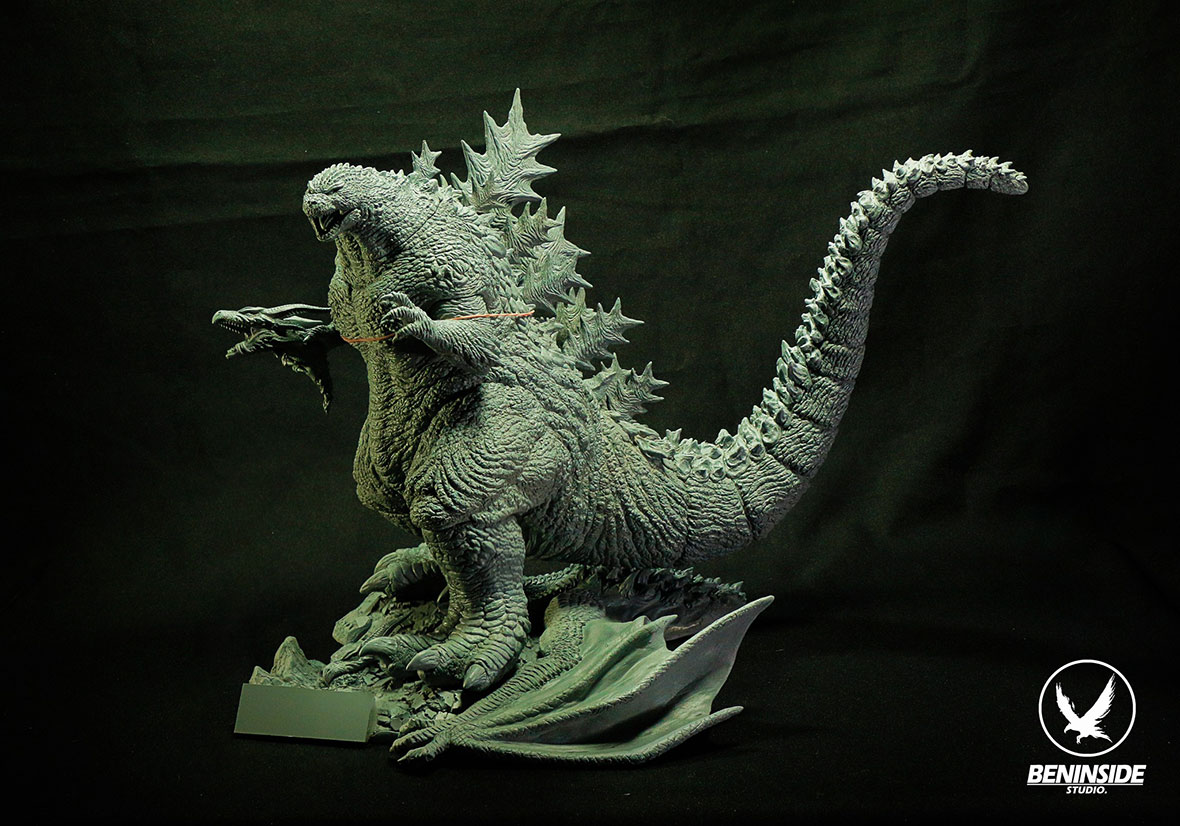
To this day, Benjapol still remembers where he sat in the movies to watch Godzilla vs. Megaguirus and the hair-raising roaring of the monster. He also remembers how, near the cinema, there was a toy store selling several types of tokusatsu toys. He went there with his aunt but could only eyeball the toys. Most were very expensive.
As fate would have it, his aunt suggested he’d pick something more affordable instead, and his eye got caught in a book, again because of the cover art. “It had the picture of a Godzilla model by Yuji Sakai,” he says, referring to the renowned artist who helped to design the monster in Godzilla 2000: Millennium. “I was not disappointed. The book was filled with pictures of collectible models from Godzilla, Gamera, and other kaiju.”
Many years later, already in university, when Benjapol began modeling his own monsters, he realized he had a talent. In 2016, he made his first professional model, a 30 centimeters tall bust of Shin Godzilla. Even though it wasn’t a highly profitable project, he sold a few copies and that alone was enough motivation to continue. It showed him that, whatever he was into, there was a niche for it.
直到今天,Benjapol 仍然清楚记得自己看《哥斯拉大战超翔龙》时的位置,影片中那令人毛骨悚然的咆哮声还不绝于耳。他记得,影院附近有一家玩具店,里面出售着几种特摄片的玩具模型。每次跟家人走进那家玩具店,也只能眼巴巴地望着它们,因为大多数模型都非常昂贵。
仿佛是冥冥之中的天意,家人答应让他挑选一件便宜的商品。他猛然间被一本书的封面设计吸引。“那本书里有酒井裕司的哥斯拉模型图,”他说道。酒井裕司是参与设计《哥斯拉2000》的著名艺术家。“那本书让我很意外且心存感激,里面附带各种哥斯拉、加美拉和其他怪兽收藏模型的图片。”
多年后,进入大学的 Benjapol 开始自己制作怪兽模型,同时意识到,自己在这方面颇具天赋。2016 年,他制作了第一个专业的模型——一个 30 厘米高的新哥斯拉半身像。尽管这并不是什么盈利丰厚的项目,但成功卖出几个模型后,也让他有了足够的动力继续下去。同时令他明白,不管喜欢什么,只要足够投入就能找到一席之地。
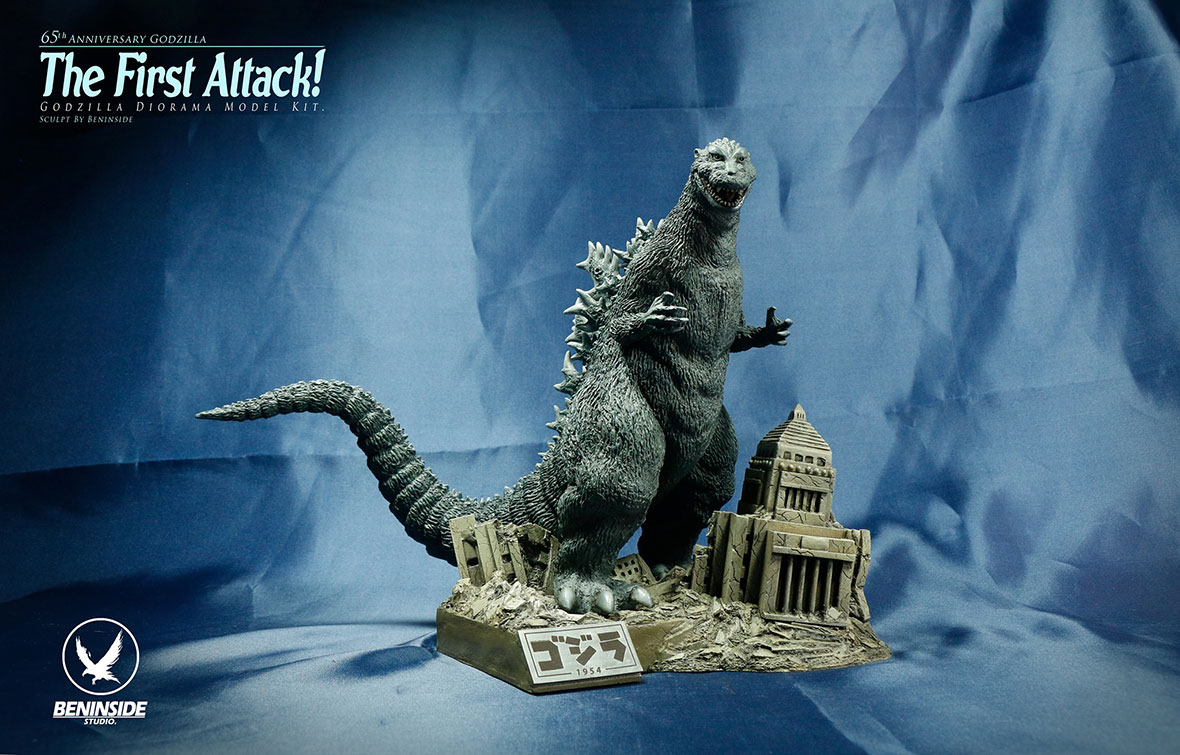
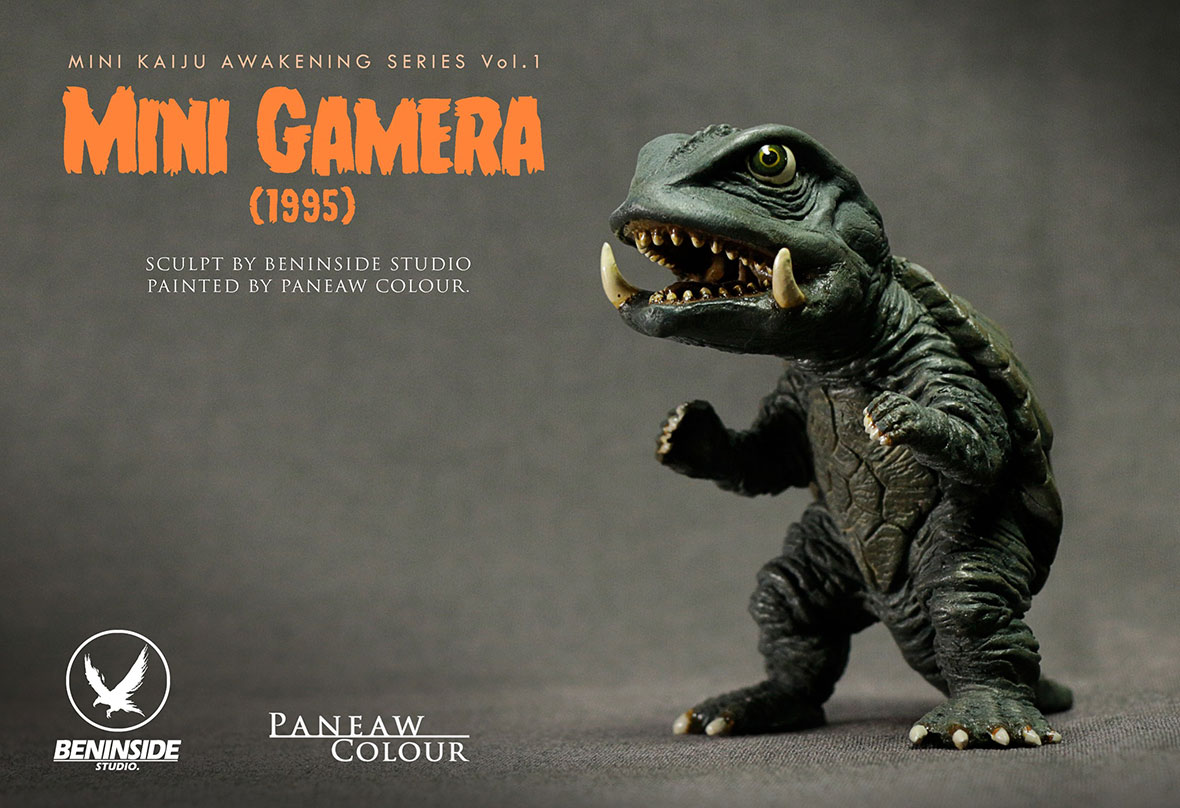
Benjapol creates his kaiju monsters with garage kit modeling techniques. As he explains, they first surged in the 1980s as a hobby for people who couldn’t find the figurines of the characters they wanted for sale, so they sculpted their own models in their workshops, which were, more often than not, their garages.
To Benjapol, what’s poignant about these DIY statues is that the makers’ passion shows in the result. “This kind of work is made by people who are huge fans of those characters and use their imagination to the fullest, and this makes these pieces much more attractive than the work of a typical model toy company,” he says.
With time, these independent toy makers became better at their craft and began showing and exchanging models at kaiju meet-ups, fairs, and conventions. Eventually, the popularity of garage kits caught the attention of the big players in the industry, toy makers such as X-Plus, Kaiyodo, Billiken Shokai, and Aurora. They also began selling DIY kits of special characters for fans to assemble at home.
Whatever is made by the big companies is called resin kits to distinguish from the independently made garage kits. They are not to be confused with model kits either. Model kits are usually pre-colored models of tanks and warships, sold more widely. You always need to paint and glue a resin kit and a garage kit, and that’s where the magic comes out; makers can choose to add anything they want to their models and paint in unexpected colors.
Benjapol 采用手办工艺来制作怪兽模型。手办(Garage Kit)最初在 20 世纪 80 年代作为一种爱好流行开来,由于找不到自己喜欢角色的模型,很多人开始亲自上阵,而这些工作室通常都是他们家中的车库。
对 Benjapol 来说,这些 DIY 模型的特别之处在于体现创作者的热情。他说:“手办的初衷是热爱,并能充分发挥想象力,也因如此,这些作品比模型玩具公司生产的模型更有吸引力。”
随着独立模型制作者在这项手艺上日见娴熟,他们开始在怪兽见面会、展览和大会上展示和交换手办模型。最终,手办的流行引起了业内大型玩具厂商的注意,如 X-Plus、海洋堂(KAIYODO)、Billiken Shokai 和 Aurora。这些厂商也纷纷开始销售特别角色的 DIY 套件,供粉丝在家里拼装。
由大型厂商制作的手办通常为树脂套件(Resin Kit),以区别于独立制作者的车库套件(Garage Kit),而这两者又区别于模型套件(Model Kit)。模型套件通常是预上色的坦克和军舰模型,销售范围更广。而树脂套件和车库套件则还需要涂上色和拼装,这也正是手办的魅力所在;制作者可以选择在模型中添加任何想要的东西,并涂上出人意料的色彩。
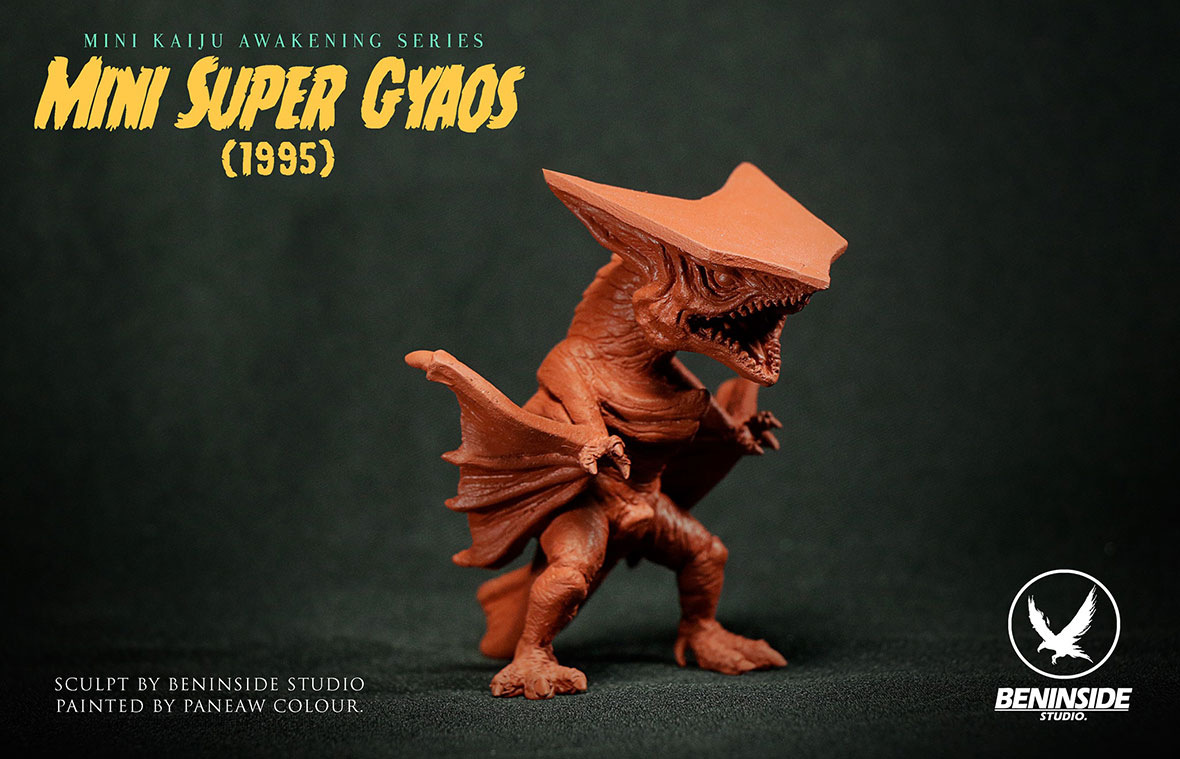

Today, under the label Beninside Studios, Benjapol produces kaiju collectibles. He sells them in resin kits that fans can assemble and paint themselves or as fully completed sculptures. “Depending on the size, the complexity of the structure, and the level of detail, it can take up to two months to create a prototype,” he says, referring to the model he uses to cast his characters. “When the prototype is ready comes the hardest part: disassembling it into different parts to create silicone molds and then casting them with resin. It’s a complex process of mixing and measuring ingredients; if you make a mistake, it’s hard to correct. Painting is the last part.”
Benjapol customers are a diverse group, from seventeen years old to about sixty, primarily men. He doesn’t know much about them. “The only thing I can confirm is that they are kaiju fans and love these big monsters,” he says. He also knows that their favorite monsters are Godzilla and Gamera, the sculptures he works on more often. “Monsters always have some spell and charm that keeps people interested. I grew up with this feeling. The power of monsters is not really because they are scary and strange but because they are unique,” Benjapol says.
如今,Benjapol 以 Beninside Studios 品牌的名义制作怪兽收藏模型,既有未涂装树脂模件套件,这样粉丝就可以自行拼装和上色,也有完整的模型作品。他说:“根据不同的尺寸、结构的复杂性和细节,开发一个原型可能需要两个月的时间。”原型是指用来浇铸角色的模型,“原型完成后,接着就是最难的部分:将其分解成不同的部件,用来制作硅胶模具,然后用树脂浇铸。这个过程非常复杂,需要混合和测量各种成分,稍有差错,就很难修复。而最后一步就是上色。”
Benjapol 的客户很多元化,从 17 岁到近 60 岁的人都有,但大部分都是男性。对于客户,他了解不多,他说:“我唯一能确定的是,他们都是怪兽迷,都很喜欢这些巨型的怪兽。”还有,他们最喜欢的怪物是哥斯拉和加美拉,这两只怪兽是他平时制作得比较多的模型。“每只怪兽总有一些吸引人的超能力和魅力。这是我从小就有的感受。怪兽的魅力并不在于它们有多可怕或有多奇形,而在于它们独一无二的特性,”Benjapol 说。
When it comes to the king of monsters, Godzilla, he thinks its allure is universal and that it develops with time to become more relevant. “Godzilla will always remind us of how deadly war is, but modern films bring new reinterpretations for the monsters. Like in Gareth Edwards’ Godzilla from 2014, Godzilla takes the meaning of a natural force that balances existence. Likewise, Godzilla VS Kong from 2021 shows humans trying to play God at the top of the food chain, but they end up being destroyed by Godzilla. That teaches us something about our human-centric arrogance to think we can prevail over nature.”
Soon, Benjapol plans to open a monster sculpture course for children and teenagers. “They are in a confusing transitional age. They might need a door, a way into their future,” he says. He reflects on everything Godzilla means to him and how it stirred his life into exciting directions. “Godzilla is my religion,” he laughs. Then, he says that the monster gave him something to hold on to in his life and a career he loves. Godzilla still casts the same spell on him as it did when he was a boy. “He’s my friend,” he says candidly. “That’s the thing with monsters. Once you get to know them, they’re not scary anymore.”
对于哥斯拉,他认为这只怪兽之王有着一种更大众化的魅力,并能随着时间的推移不断演变,与时俱进。“无论何时,哥斯拉都将提醒人们战争的可怕,但现代的哥斯拉电影为这只怪兽带来了新的诠释。比如加雷斯·爱德华兹(Gareth Edwards)在 2014 年所执导的新版《哥斯拉》中,哥斯拉成为自然力量的象征,平衡各种生物的存在;同样,在 2021 年的《哥斯拉大战金刚》中,人类试图占据食物链顶端,扮演上帝角色,最终却被哥斯拉摧毁,以此揭示人类妄想战胜大自然的傲慢。”
Benjapol 计划在不久后为儿童和青少年开设一个怪兽雕塑课程。他说:“他们正处于一个困惑的过渡期,可能需要一扇门,让他们看到通往未来的道路。”他认真思考了哥斯拉对他的意义,以及它如何让自己的人生朝着激动人心的方向前进,他笑着说:“哥斯拉就是我的信仰。”哥斯拉给了他生活的支柱,也让他拥有了自己所热爱的事业。对他来说,从小时候到现在,哥斯拉的魅力从未消减,“它像是我的朋友。这就是怪兽,一旦你认识它们,就不会再觉得它们可怕。”
Like our stories? Follow us on Facebook and Instagram.
Instagram:
@tokusatsumonamour
@mykaiju
@beninside
Contributors: Tomas Pinheiro, Lucas Tinoco
Chinese Translation: Olivia Li
Images Courtesy of Benjapol Parosin, Guze Stagno, and John Ruffin
Instagram:
@tokusatsumonamour
@mykaiju
@beninside
供稿人: Tomas Pinheiro, Lucas Tinoco
英译中: Olivia Li
图片来自 Benjapol Parosin, Guze Stagno 与 John Ruffin

